Via Podiensis: Inspirations
Last night I took the pilgrim dinner in the albergue. We were seated at long tables, with pilgrims from around the world. I had a delightful conversation with a photographer from Georgia (USA) named Joseph. He’s working through some things on this Camino, as are most of us.
Joseph crossed the Pyrenees in the same storm I did, and he was able to tell me a little bit about the pilgrim who died. I knew that a pilgrim died of a heart attack in Zubiri the night that I was there, but apparently he had been complaining about having chest pains in the pass the previous day.
This morning I was packed and ready to go just after 7 AM. Breakfast at the village bar meant it was after 7:30 by the time I left town. I was in no rush; today was going to be about 26 km and mostly dead flat. There were plenty of beds available at my destination.
Given my lackadaisical attitude this morning, I was quite surprised that I was not the last pilgrim out of the albergue. Finding the Camino involved a little bit of backtracking, but it was relatively easy to find the route in this small town.
It was chilly and the sky was just beginning to lighten. The path was the familiar dirt, stone, and gravel combination I’ve had more or less continuously since Burgos. The dirt itself is very chalky, a light gray color, almost white in certain light. Come to think of it, it’s probably more gravel dust than dirt. My shoes have been slowly turning this color as the days progressed.
A long row of stately trees lined the Way, with farms and fields stretching to the limits of my vision.
At about 8 AM, the Camino met and then begin running alongside the Canal de Castilla. Like a similar canal I walked along in France, this was constructed in the 18th century to facilitate commerce in the interior. The great irony is, of course, is that though the construction lasted almost a century, within a generation of completion it was replaced by the railroads.
These days, it’s used to help irrigate this area. The region was a breadbasket in Roman times, but slowly dried out over the course of 1000 years. Since the canal was built, the region once again helps feed Spain.
About 8:30, I came to a set of locks on the canal and saw my first canal boat. The Camino actually crosses over the locks here, which affords a great view down the length of the canal.
A short bit of roadwalking led directly into the major town of Frómista. This town is a major stopping point on the Camino, and many guidebooks suggest this as the end of a stage.
I had no such intention, of course. But I did want a quick cup of café con leche and to visit a couple of churches. I started with the 16th century church of San Pedro, which has a fascinating exterior but was unfortunately locked.
I then circled back to the 11th century monastic church of San Martín de Tours. I love this little Romanesque gem, completed around the year 1066 and lovingly restored in the late 19th century. It was unfortunately locked as well. Nevertheless, I prayed for the intentions of the Camino here.
Perhaps someday I will get to visit the town’s famous cheese museum, but today was not that day.
After an unconscionable amount of sidewalks and crossing a couple of highway bridges, I was back on the Meseta by 9:30 AM. In this case, it was the old familiar dirt and gravel path, but next to a major highway.
It was already warmer – I had removed my fleece after coffee – and there was not a cloud in the sky.
I’ve noticed over the past couple of days that the brightly painted yellow arrows, for forty years or more the ubiquitous markers of the Camino in Spain, have become faded and ill kept. In their place, I am seeing more and more printed signs on wooden posts or bolted to buildings. A literal sign of the times.
There wasn’t a lot of scenery or variation in today’s route. The path was flat and more or less dead straight. Endless farmland rolls away on the other side, broken up only by occasional stands of trees or power poles or the long concrete irrigation channels reaching towards the horizon.
I remember in 2016 that there were giant puddles, sometimes even flooding, along the section, but now it was bone dry and dusty.
I passed many pilgrims trying to fill the silence in various ways. One was holding a loud conversation, presumably on her phone. Several that were humming or singing, and I confess I may have done some of that myself.
I arrived at the little village of Población de Campos about 10 o’clock. Just before the start of the village, I stopped to pray at the small but enchanting 13th century Ermita San Miguel, which reportedly has its origins as part of a Hospitallar perceptory.
The Way through the village was poorly marked, and this came to a crescendo in a confusing series of signs pointing in two different directions. One of these was the main Camino Route, while the other was a slightly longer and prettier variant. The trouble was, the signage didn’t really indicate which way was which.
Fortunately, I had a paper map.
My original plan today was to take the alternate, but I ended up choosing the more direct path because there were more villages, and I was trying to be mindful of stopping frequently to eat a little something.
This path was more gravel-next-to-the-highway walking – a little less smooth, but still pretty much flat and straight.
I arrived in the village of Revenga de Campos at about 10:40 AM, and I was hungry. First, I visited the 16th century church of San Lorenzo, which was minded by a very cheerful and enthusiastic lady from the village.
This little church has seven altars, not counting those in the sanctuary. The style ranges from Baroque to Neoclassical to Gothic Revival. The place is clearly loved and well used. There were even a couple of old altar cards on one of the side altars.
While praying here, I very much felt like St. Lawrence was watching over me.
I grabbed a pastry and an orange juice at the local bar and was soon on my way again, umbrella aloft and sunglasses on.
It was already past 11:30 when I passed through the tiny village of Villarmentero de Campos. It had gotten very warm very quickly.
I arrived at the village of Villalcázar de Sirga at about a quarter past noon. The town is dominated by the 12th century church of Santa María de Blanca, and many miracles have been recorded here over the centuries. I took a slight detour from the Camino Route to visit this grand church.
Although I had planned on going another 6 km today, just walking into the church I made the snap decision to stay here instead.
The church was built as a collaboration between the Cistercian Order and the Knights Templar at the very transition point between Romanesque and Gothic. With some inevitable additions and restorations, it retains its Gothic retablos at the high altar and one of its side altars as well.
After the dissolution of the Templars, the church was taken over by the Knights of Santiago, who restored its Santiago Chapel in the 14th century. Here is a much damaged statue known as the Virgin of the Cantigas. King Alfonso X “the Wise” of Castile and the musicians and poets of his court wrote a series of 420 songs (cantigas) dedicated to the Blessed Virgin Mary, fourteen of which refer to miracles associated with this statue.
Sitting in this church gave me a feeling very similar to what I experienced at the church in Eunate: in my bones this feels like holy ground. There’s a kind of serenity here, an almost palpable sense that the place itself is blessed in some particular way. It’s a thing that is much easier to experience than to explain. I prayed here for the intentions of the Camino before reluctantly leaving to secure a bed.
I checked into the municipal albergue, which is operated by the Order of Malta. The view out the window of the dorm is the church. After the usual pilgrim ablutions, I returned to the church, but it was closed for the siesta.
My plan is to return there to pray Vespers when it reopens.
Today was the fiftieth day of my walking pilgrimage.
Date: 06 October 2023
Place: Villalcázar de Sirga
Today started: Boadilla del Camino
Today’s Photos!
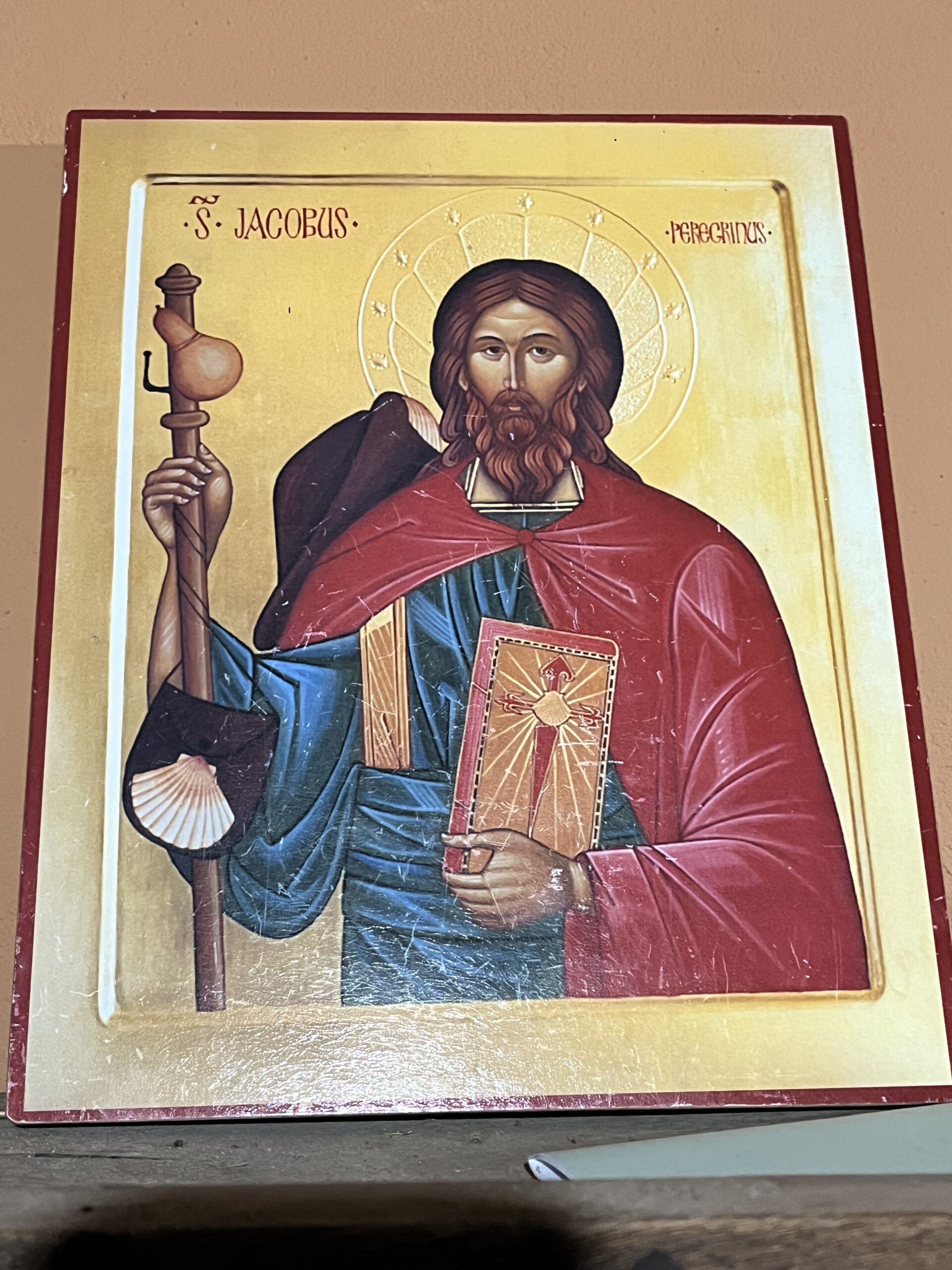
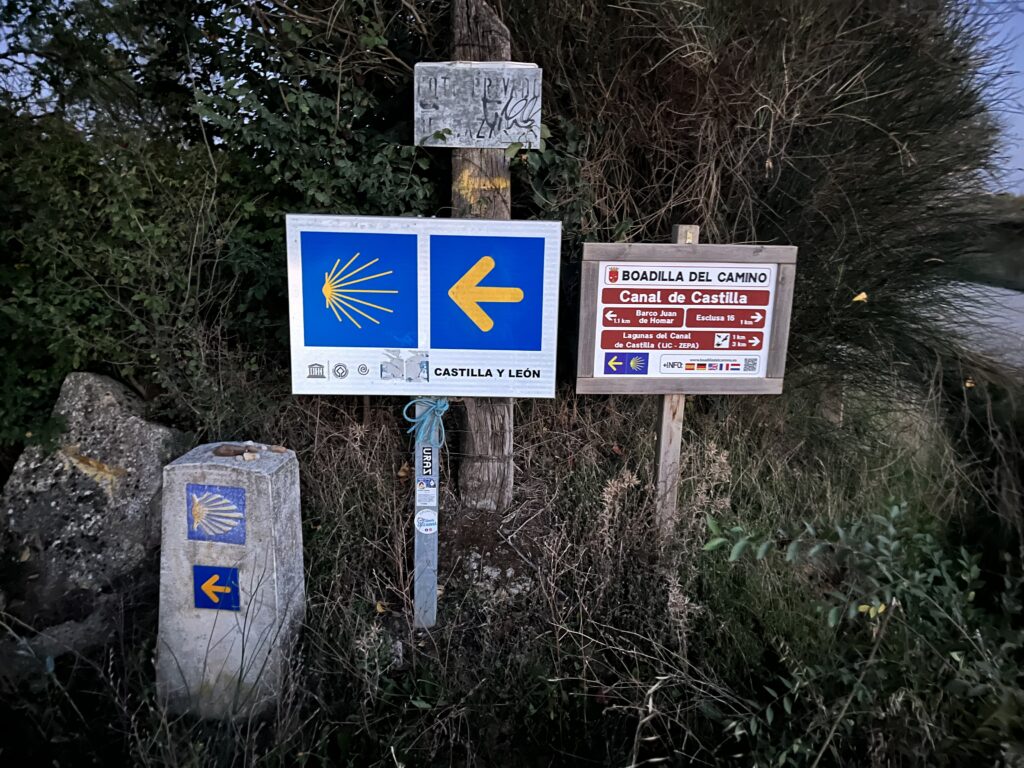
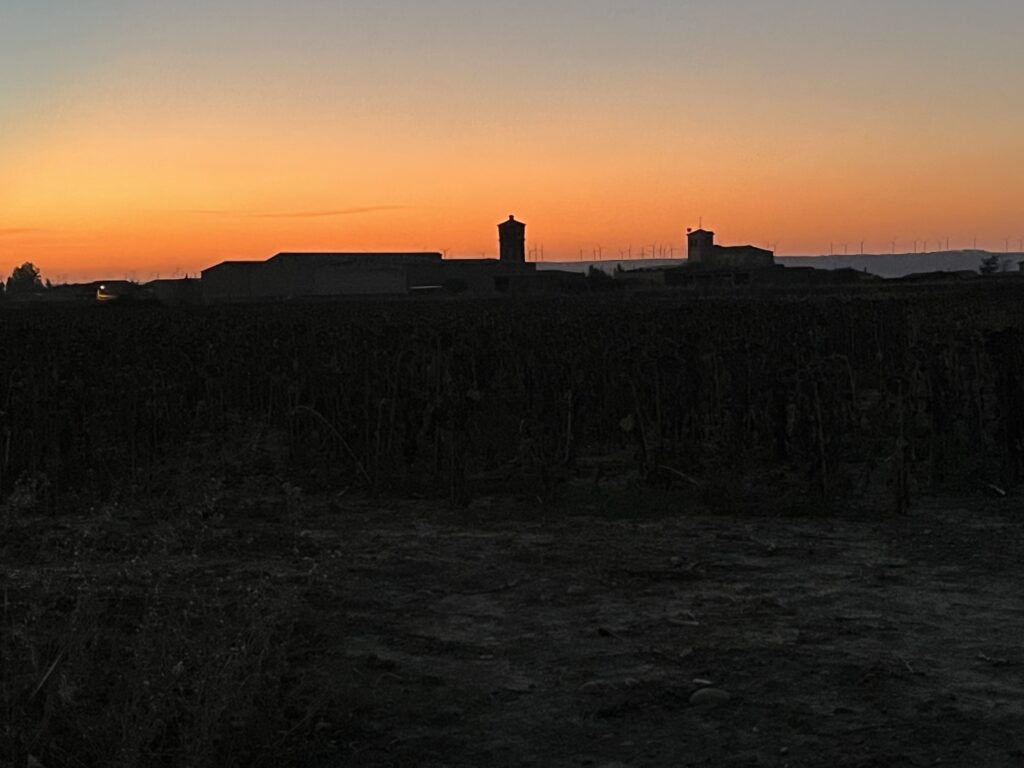
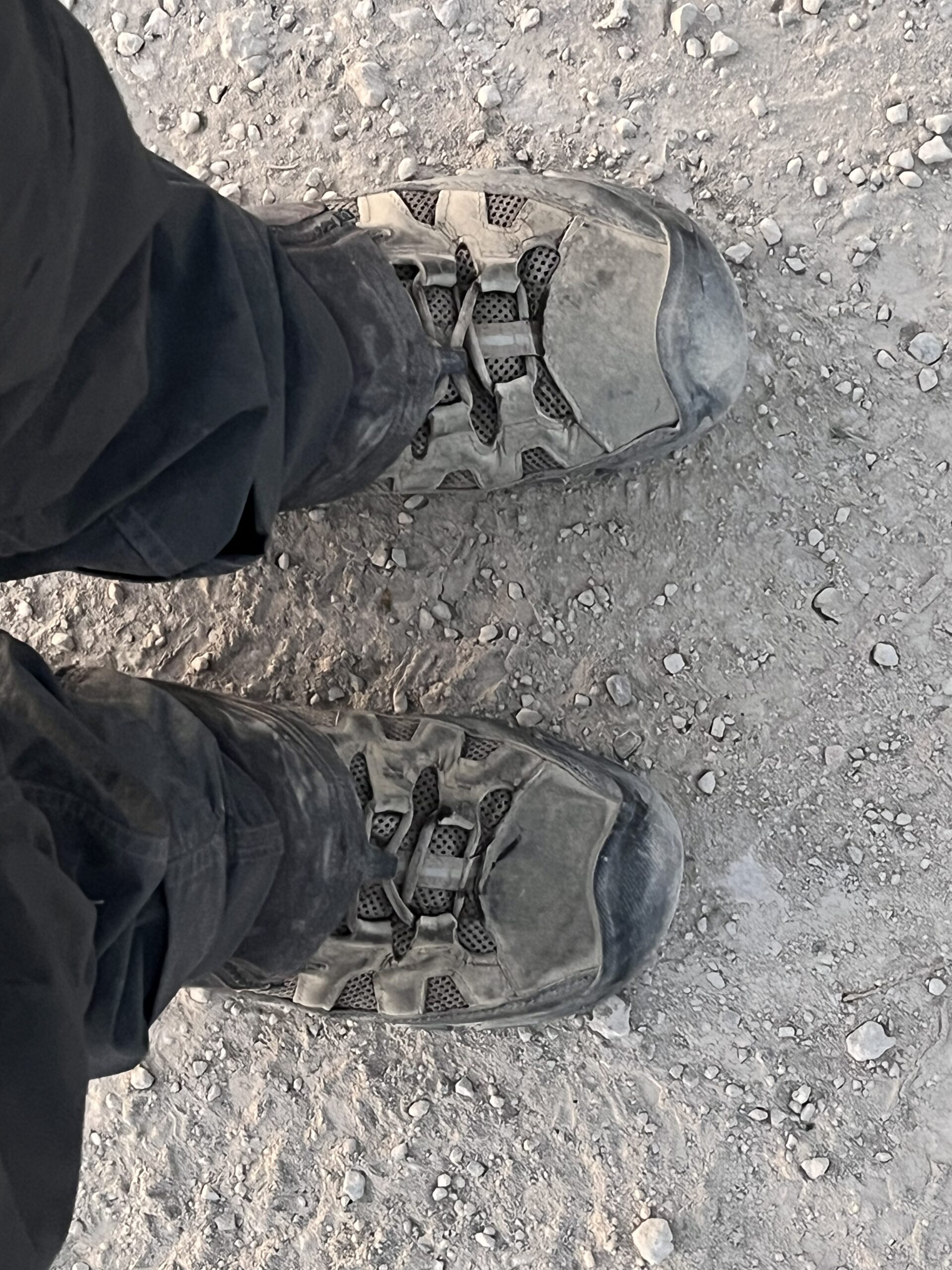
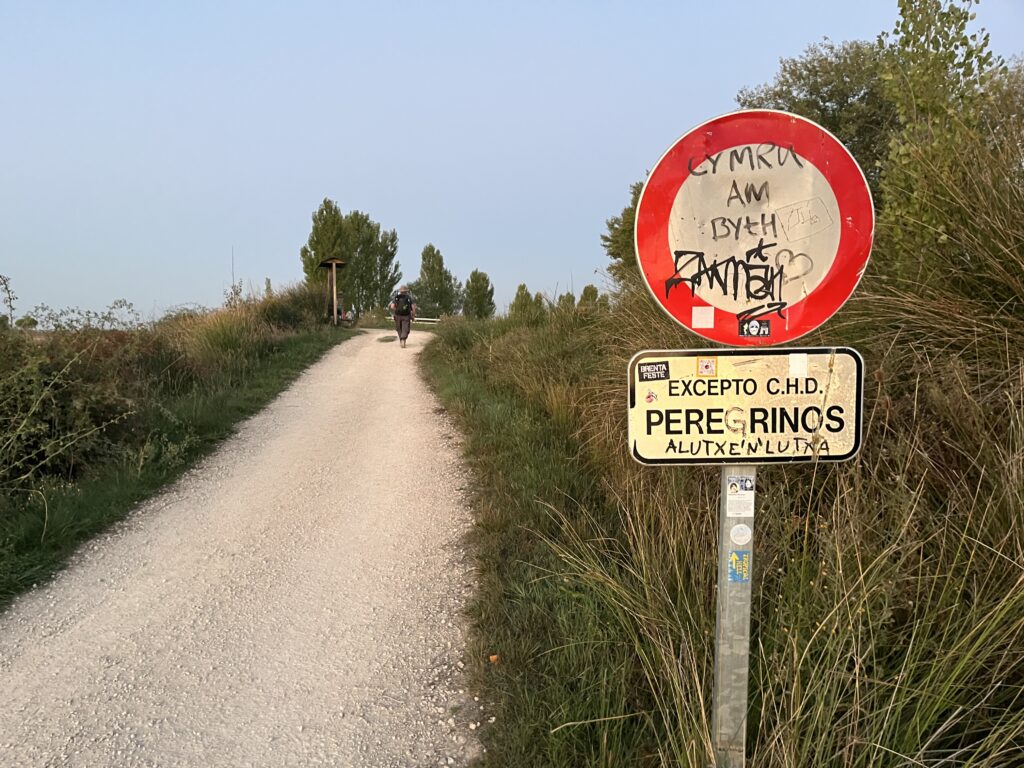
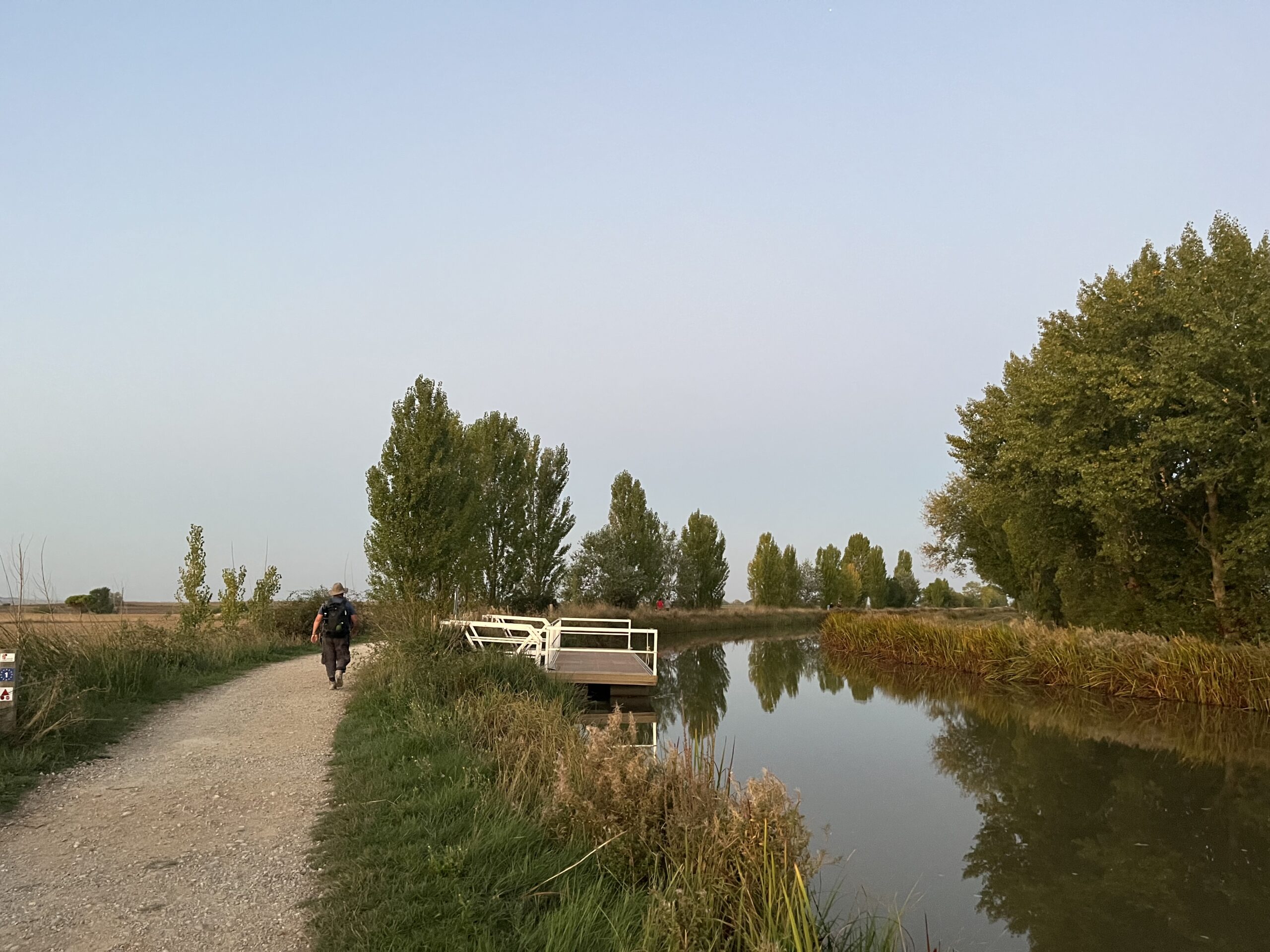
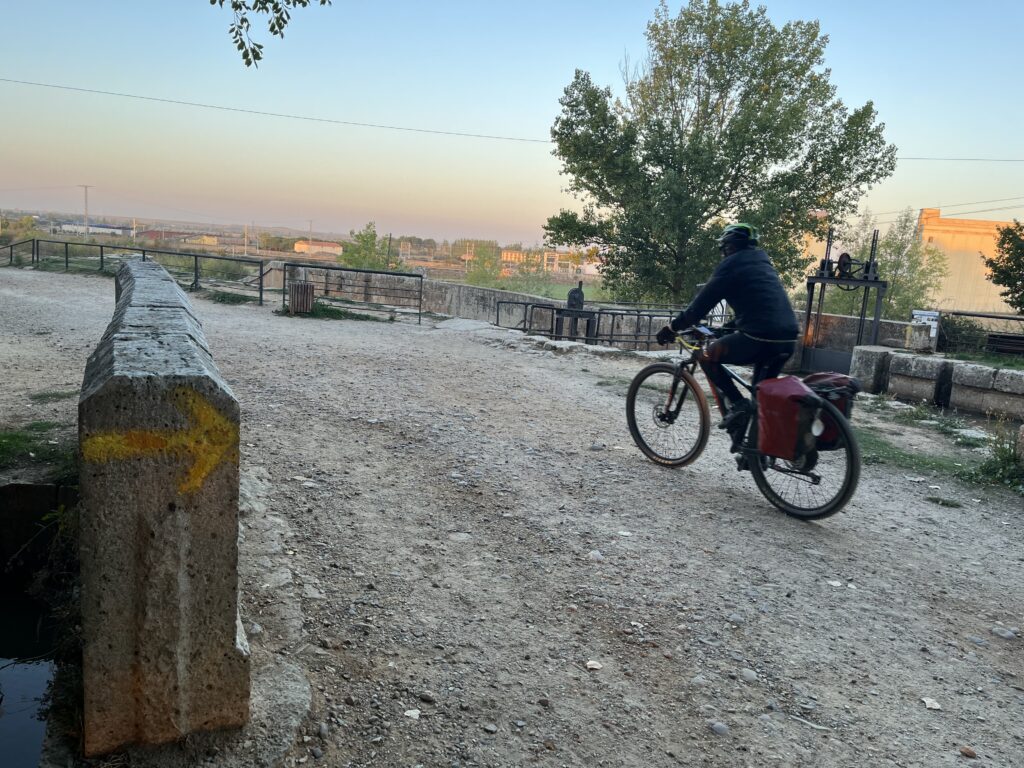
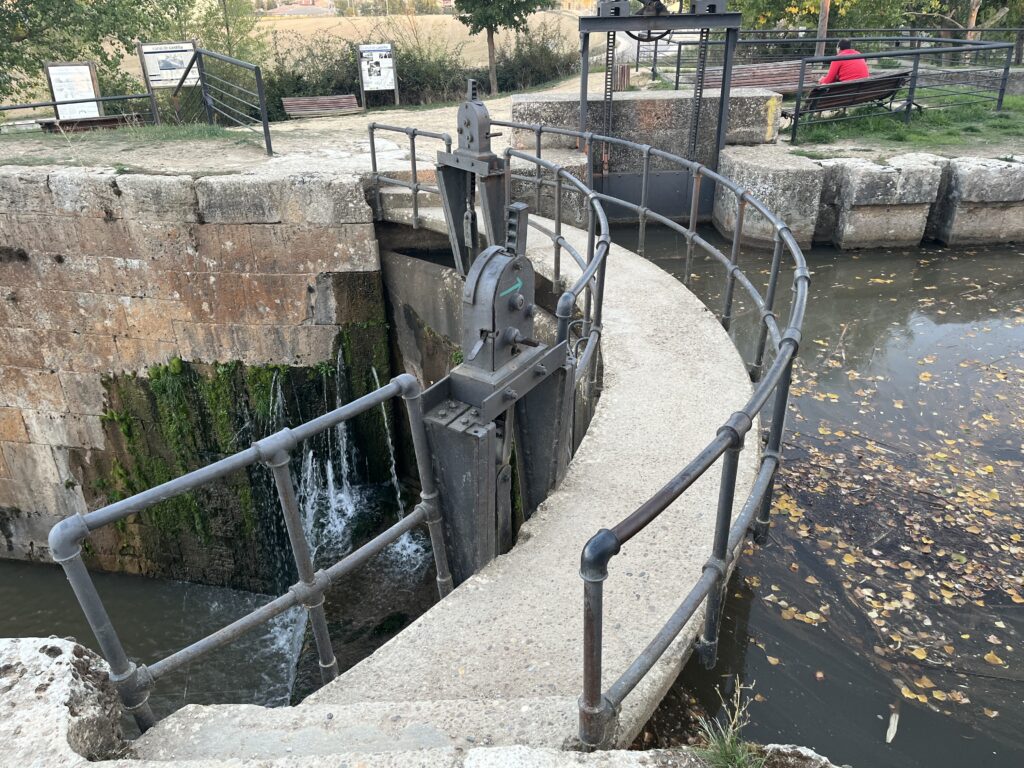
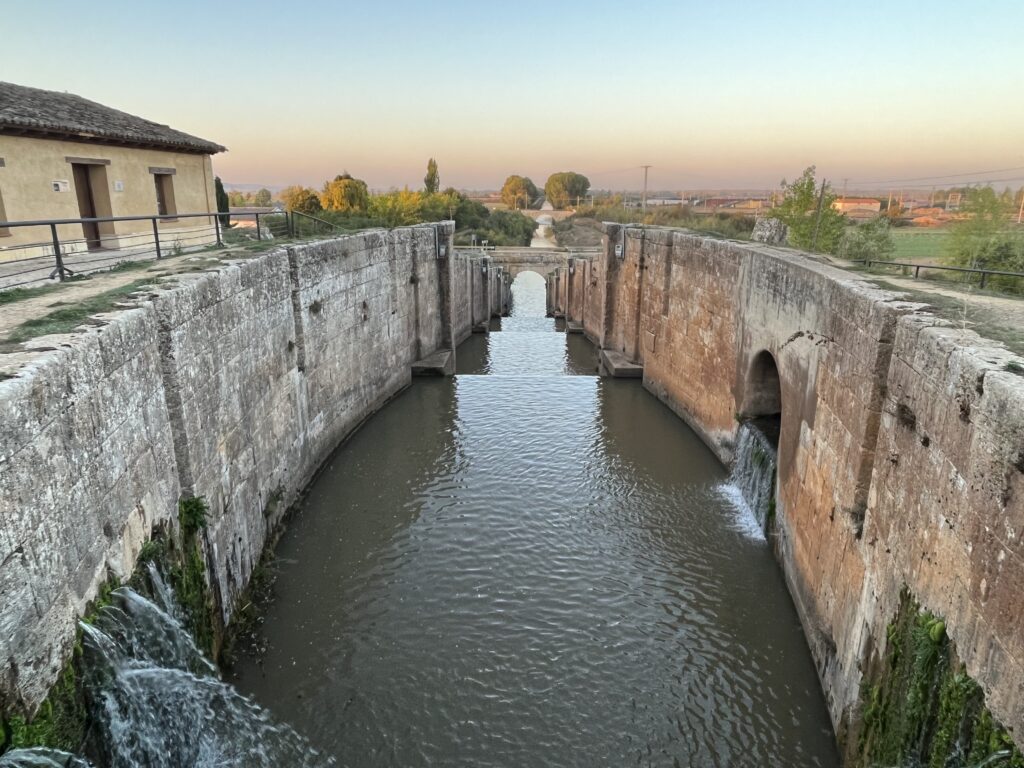
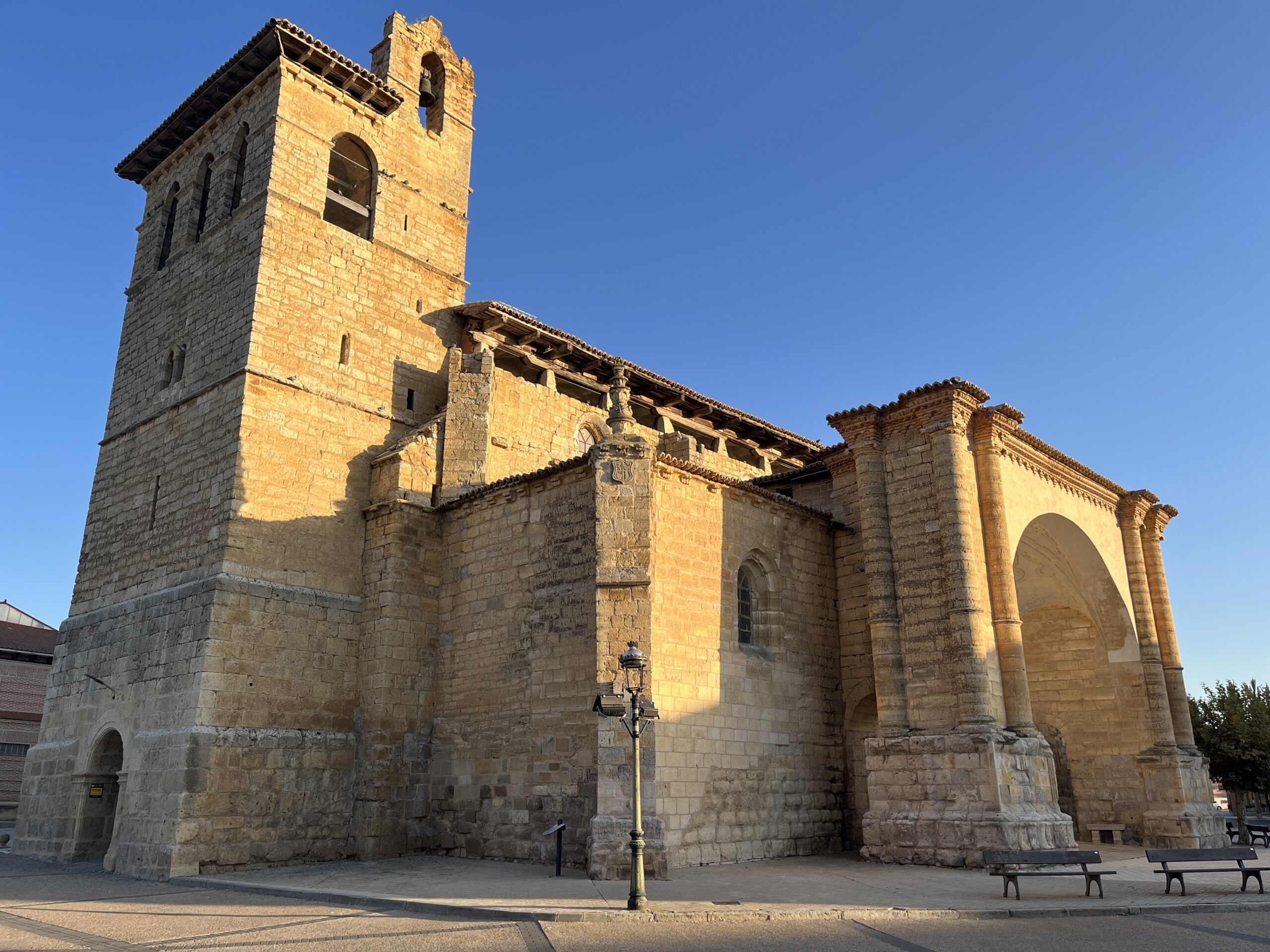
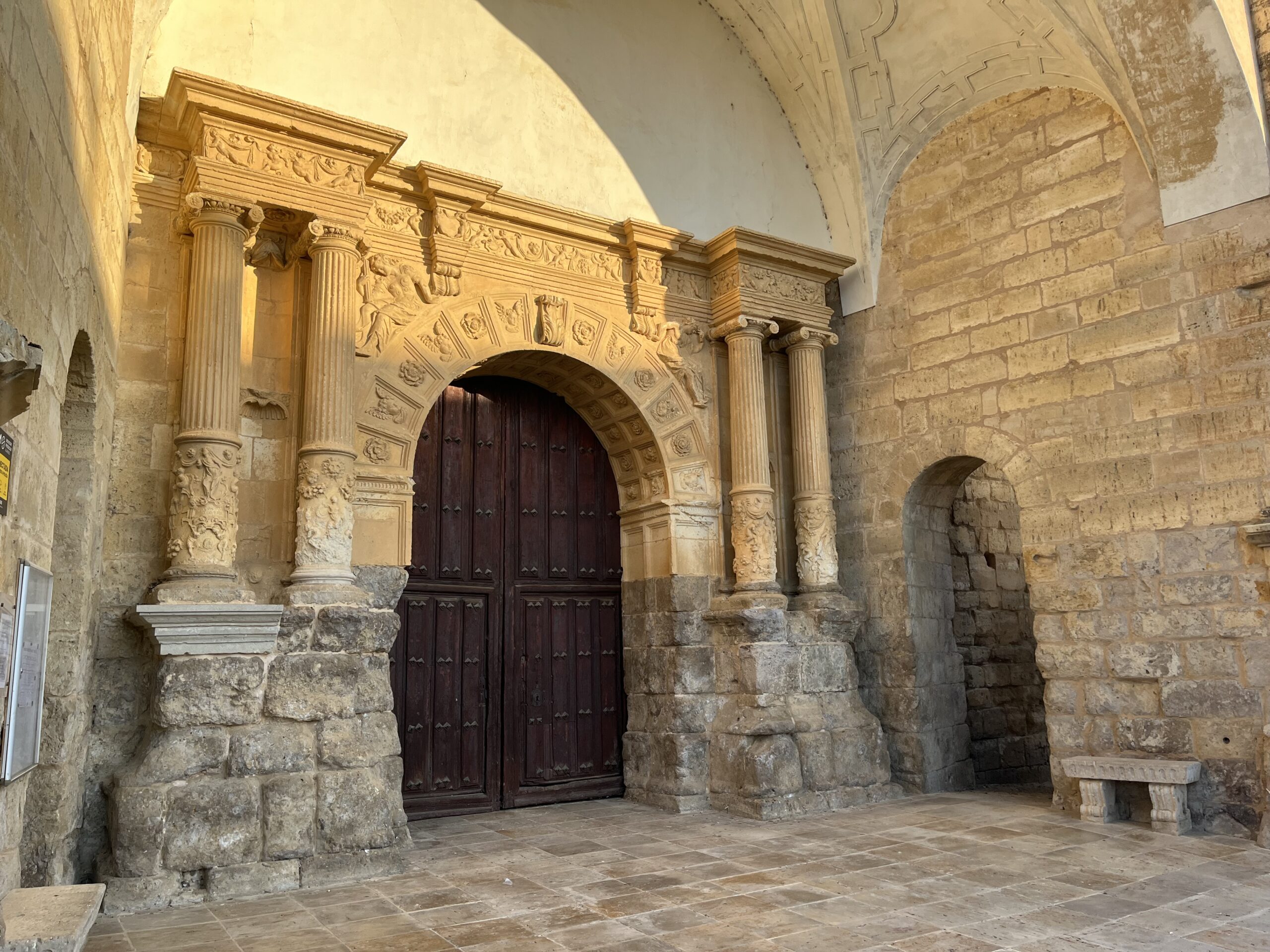
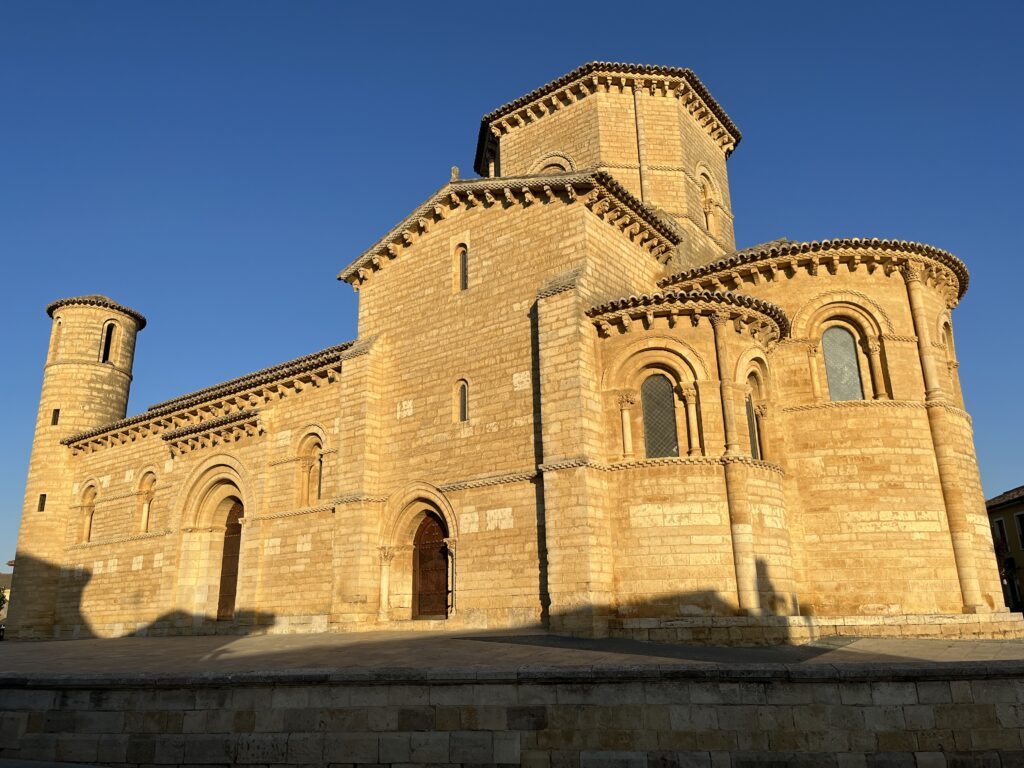
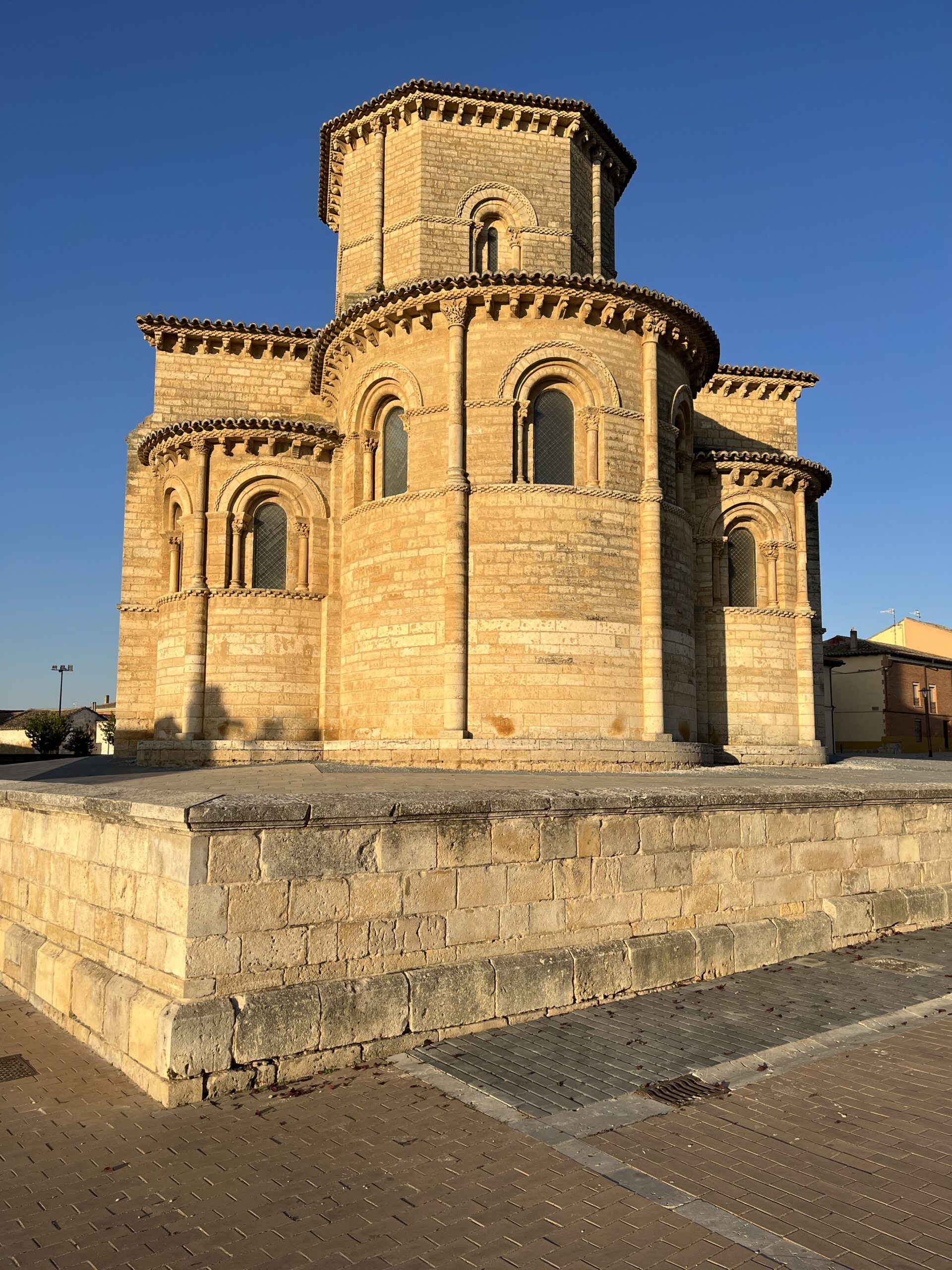
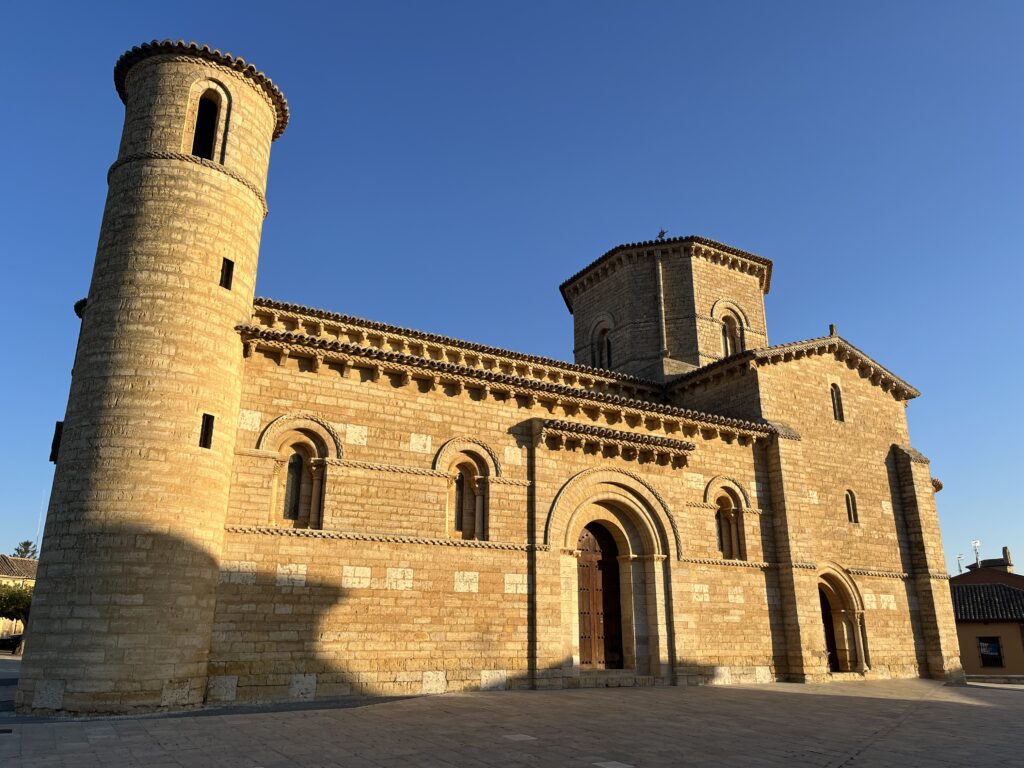
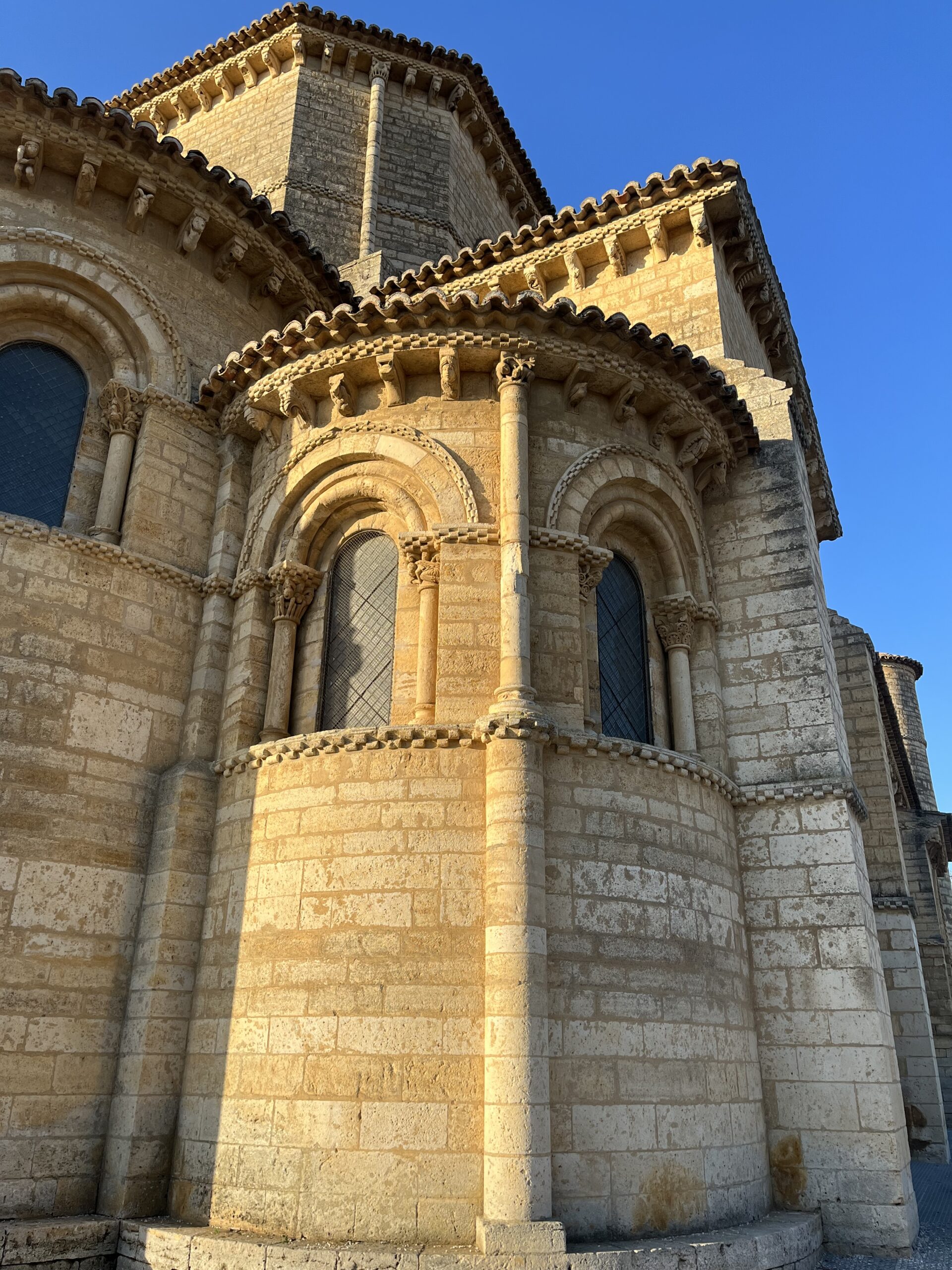
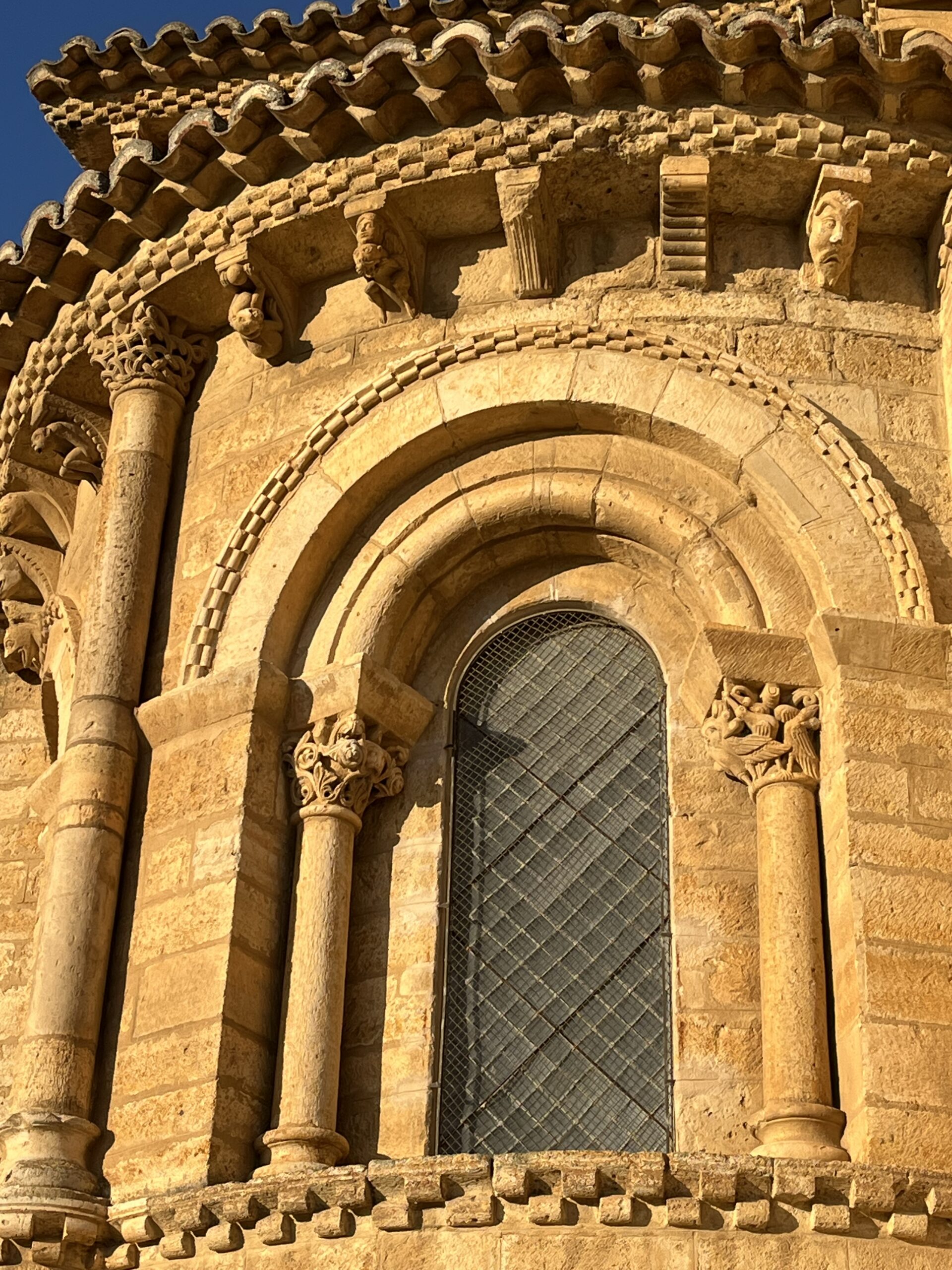
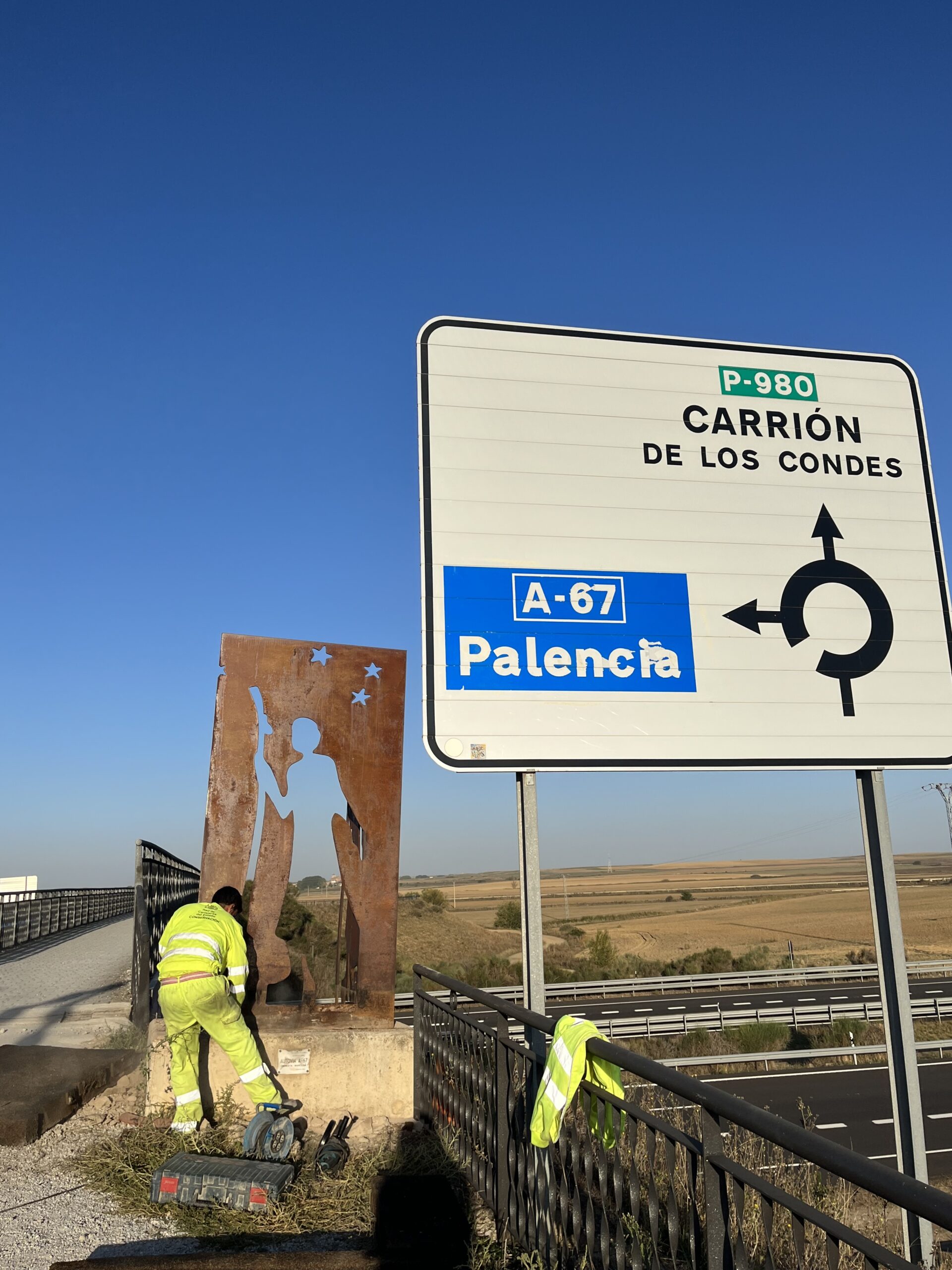
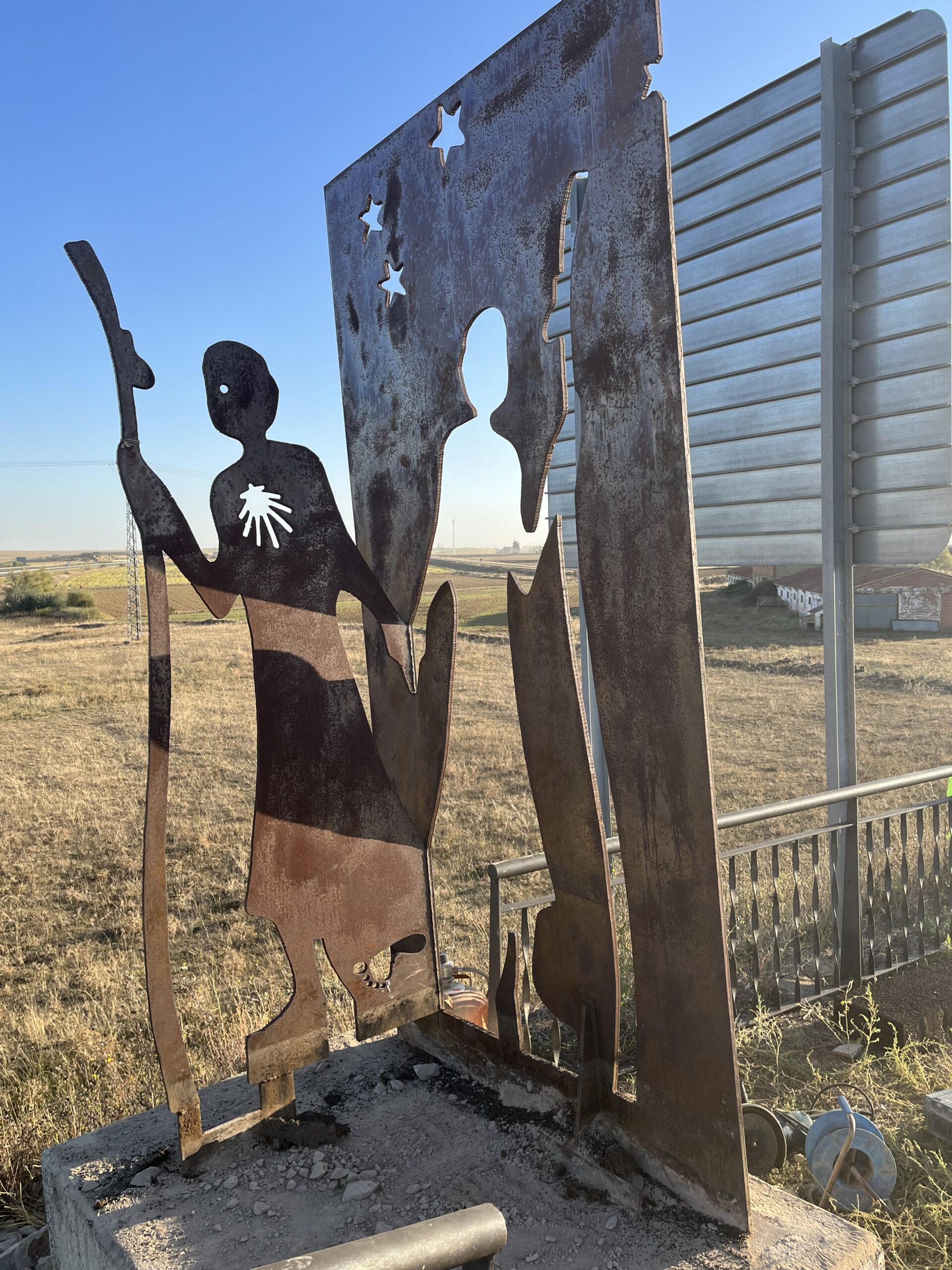
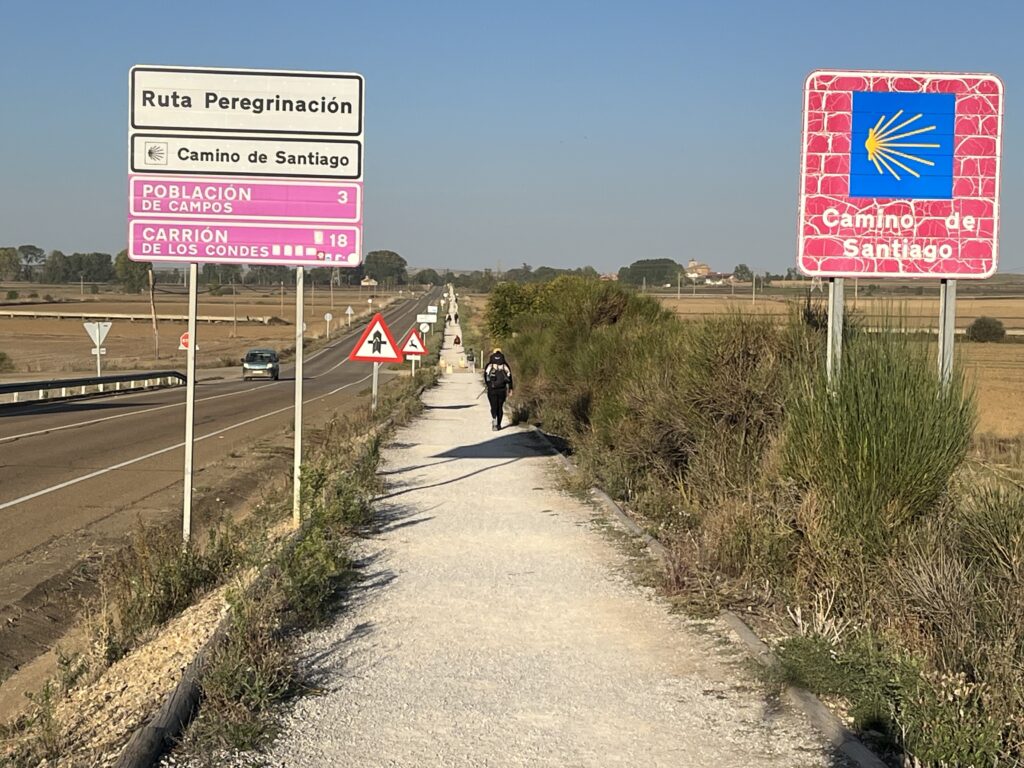
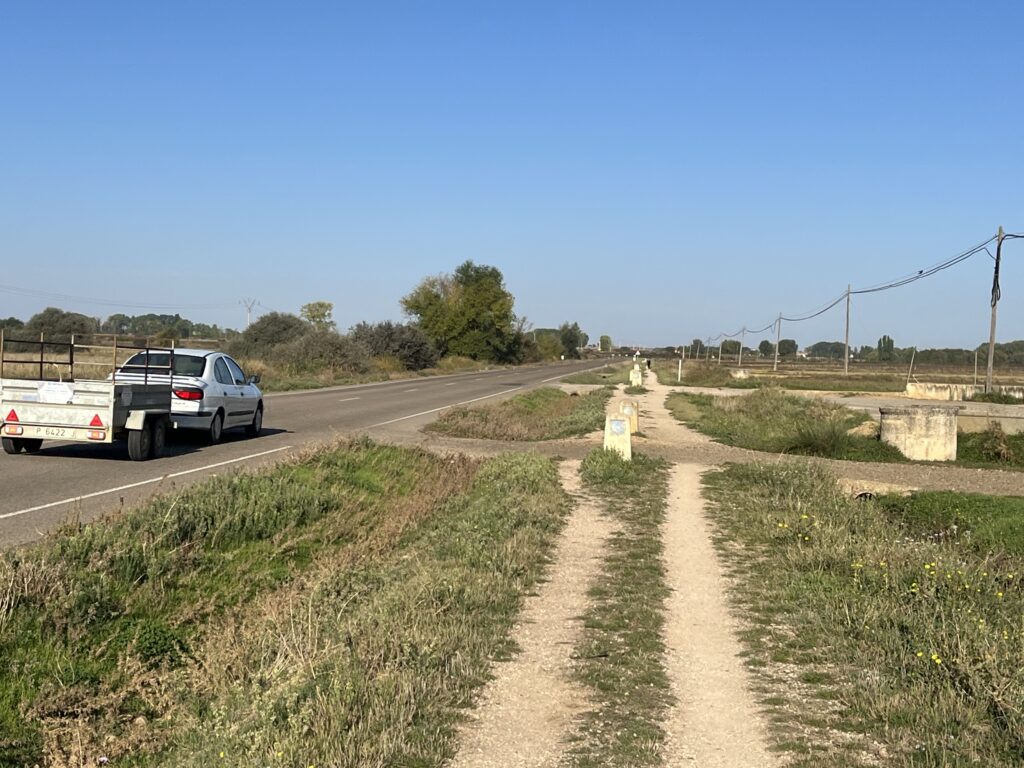
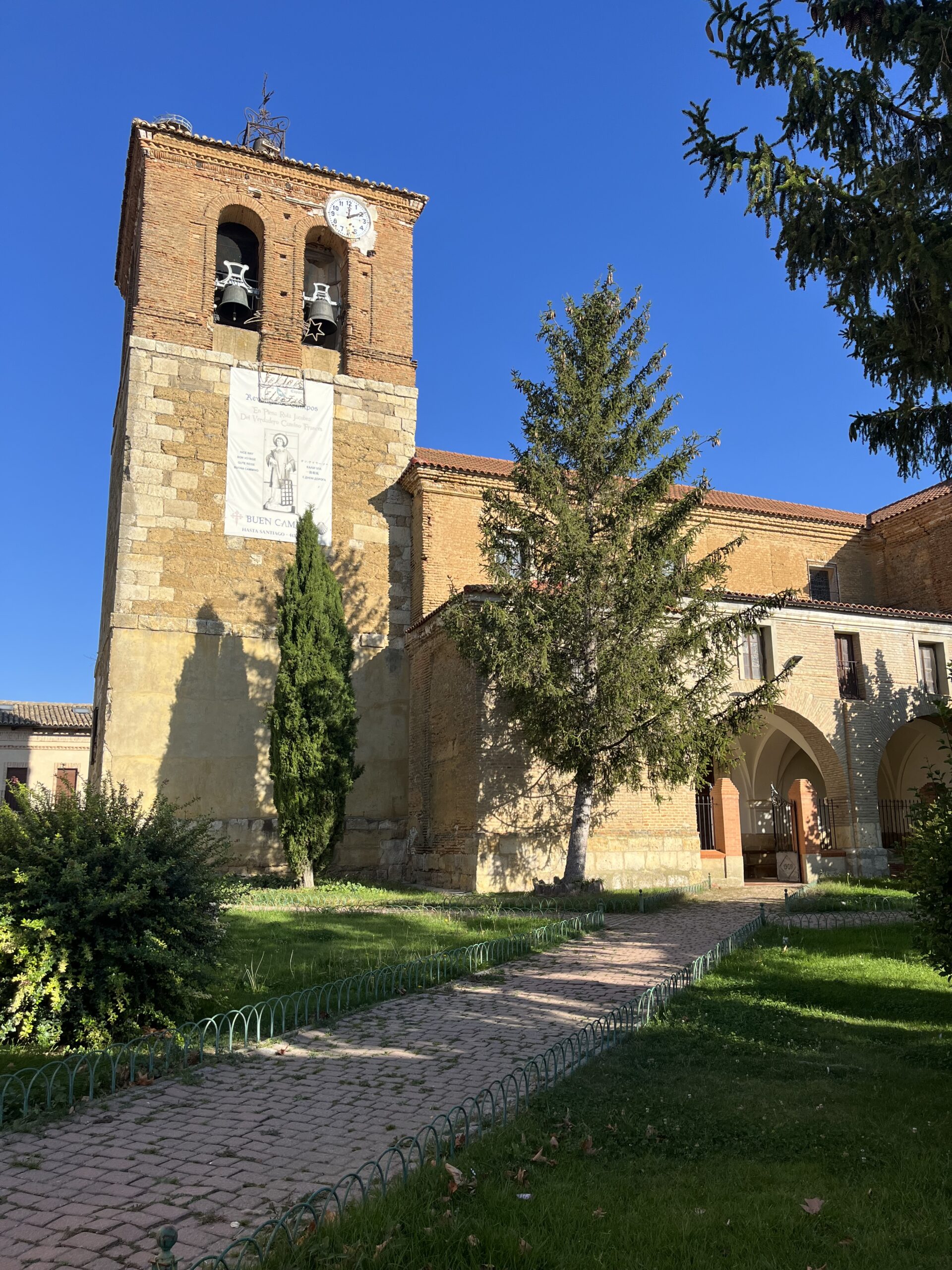
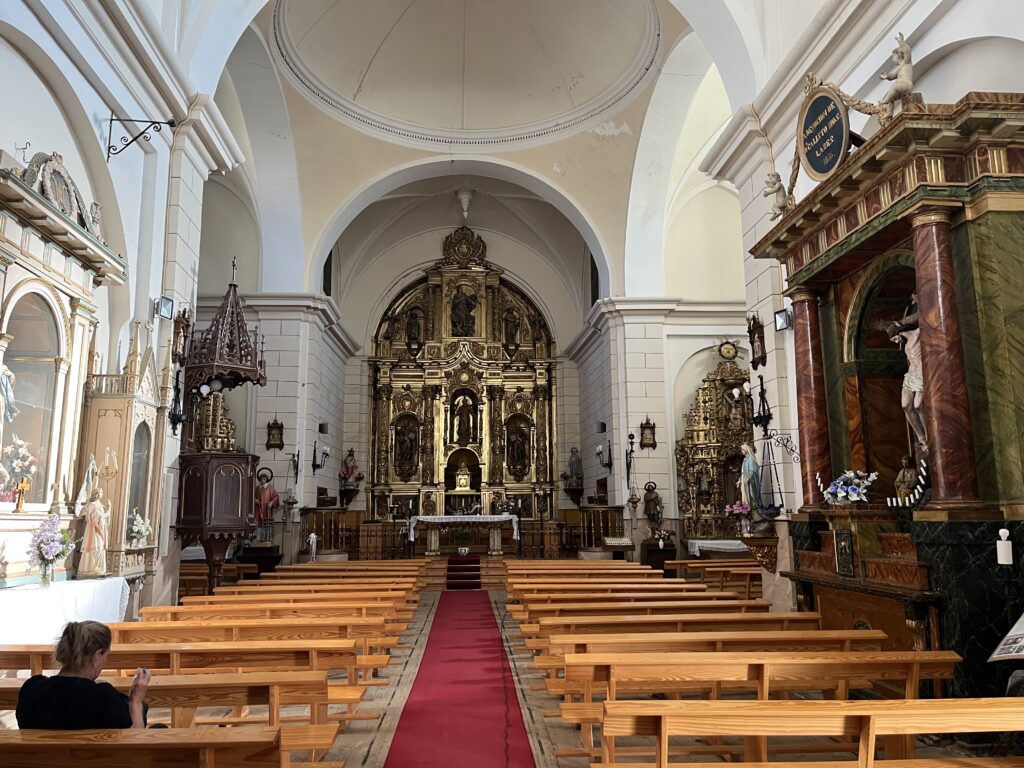
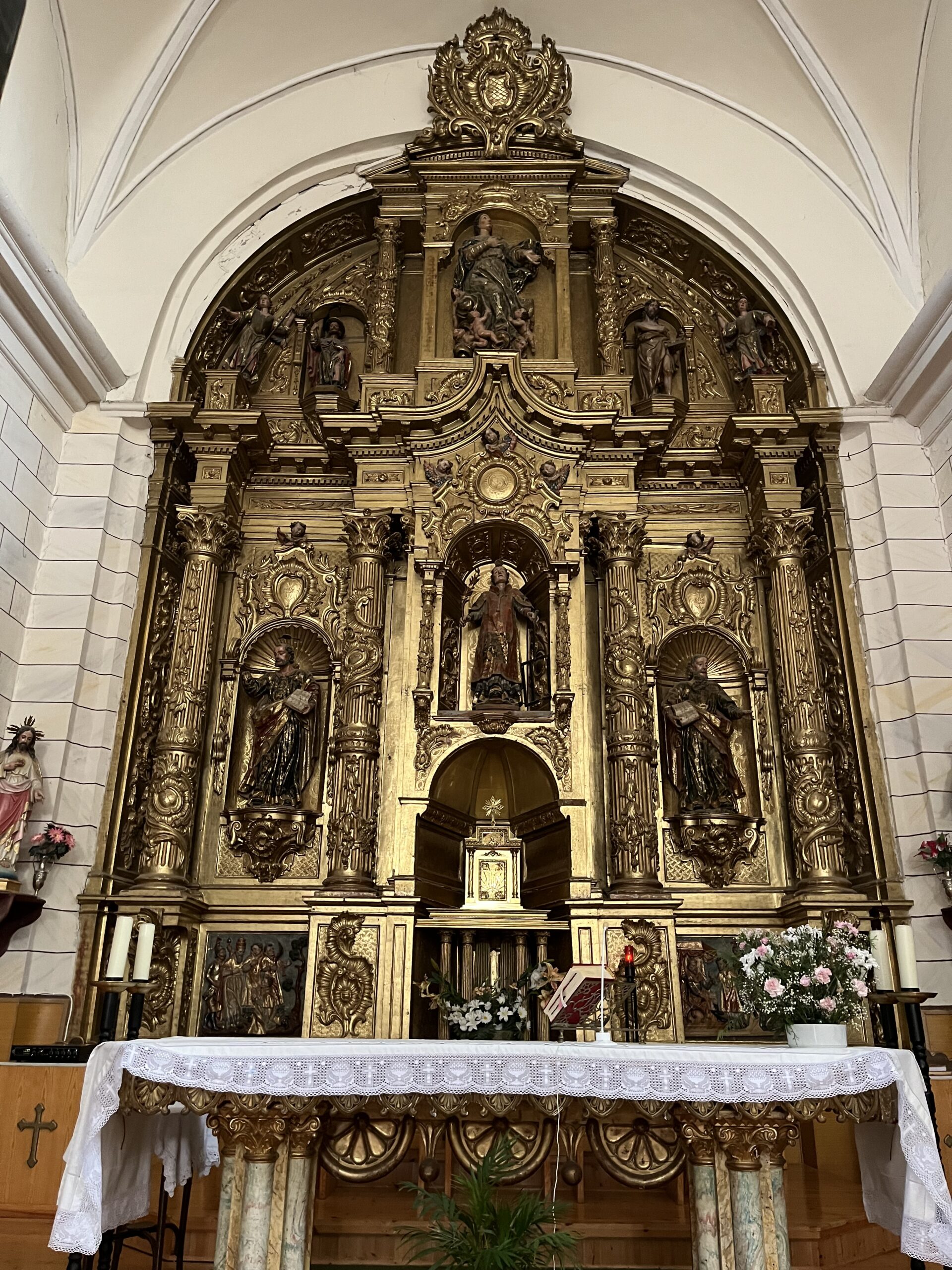
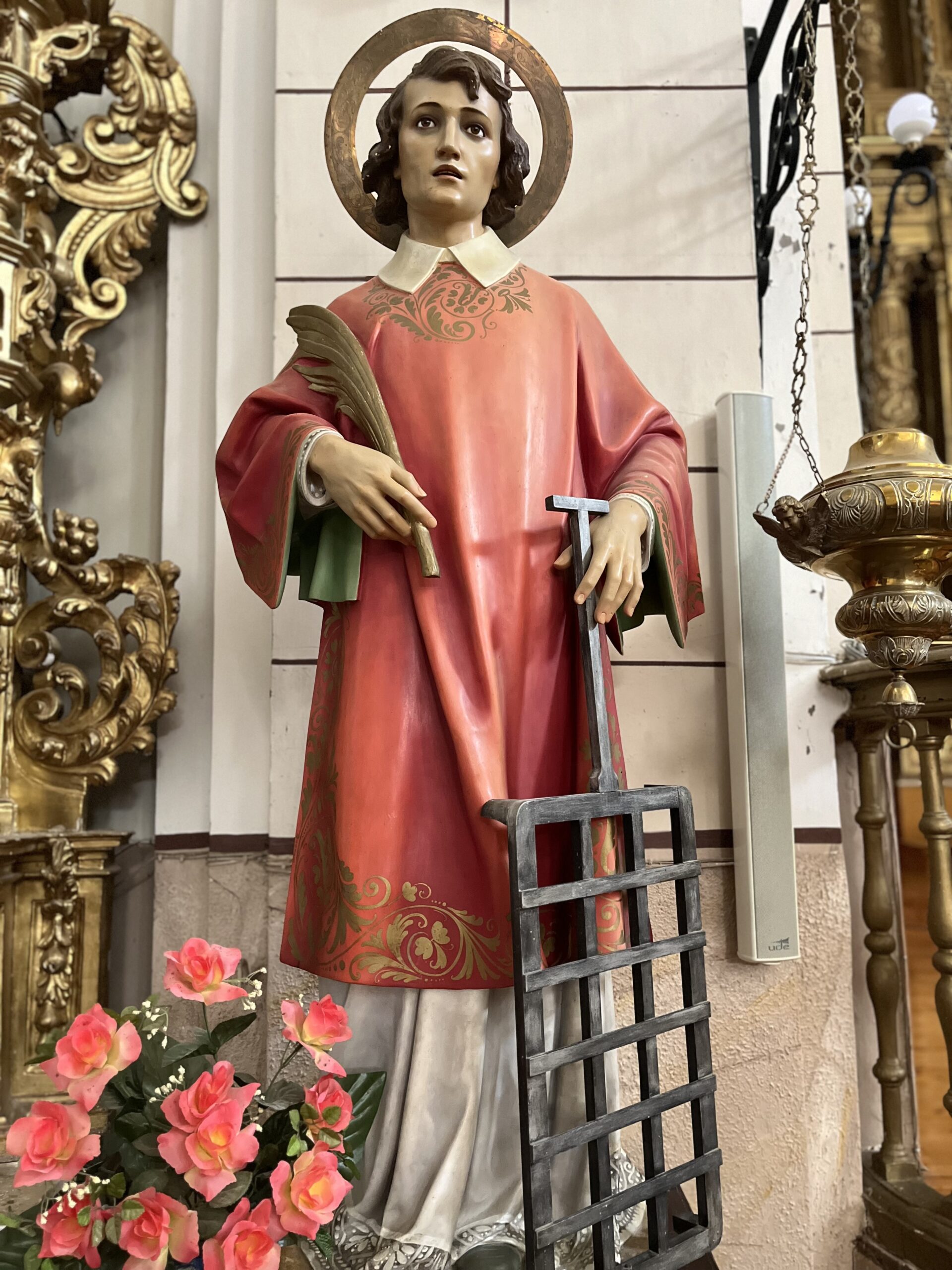
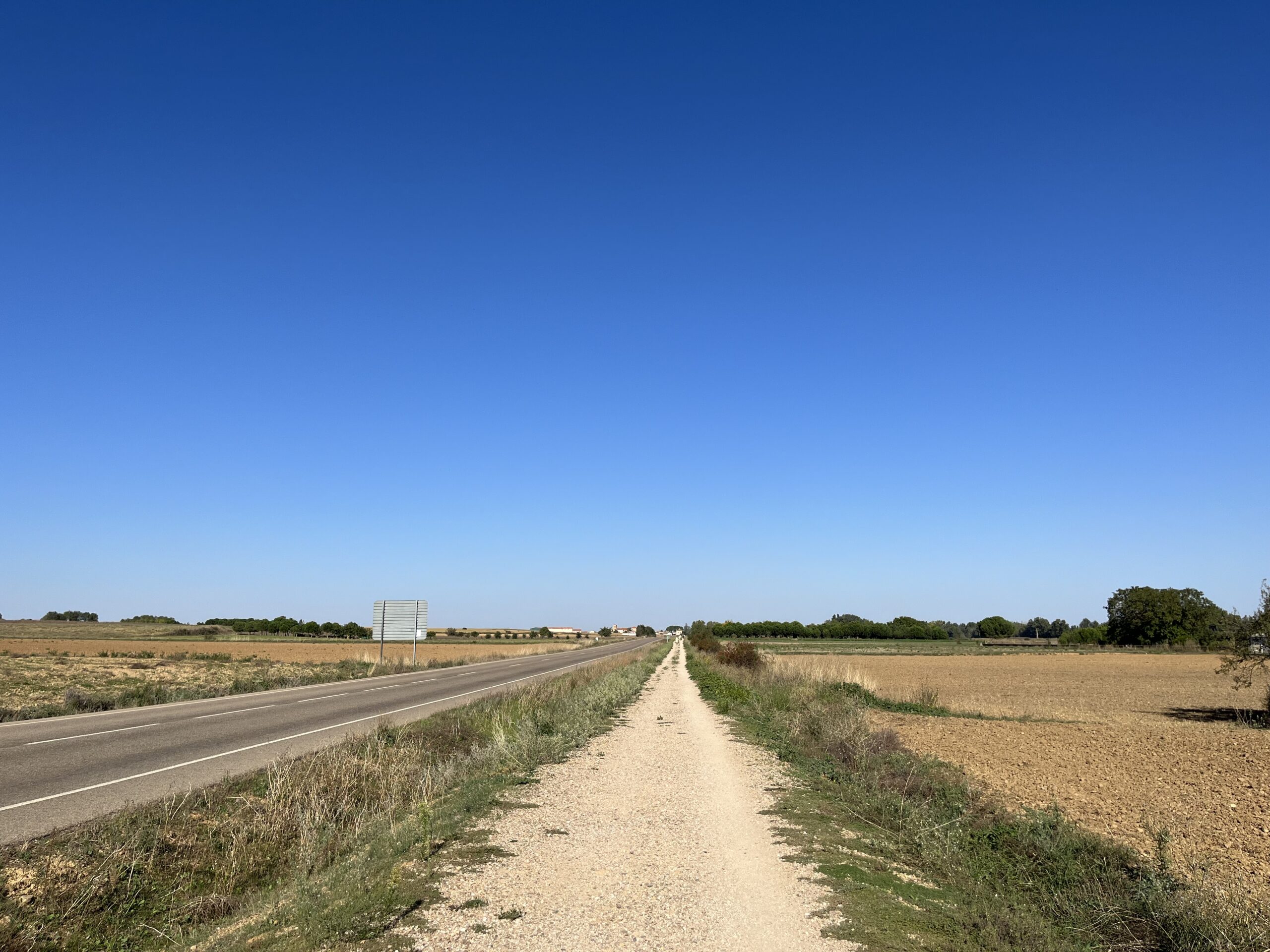
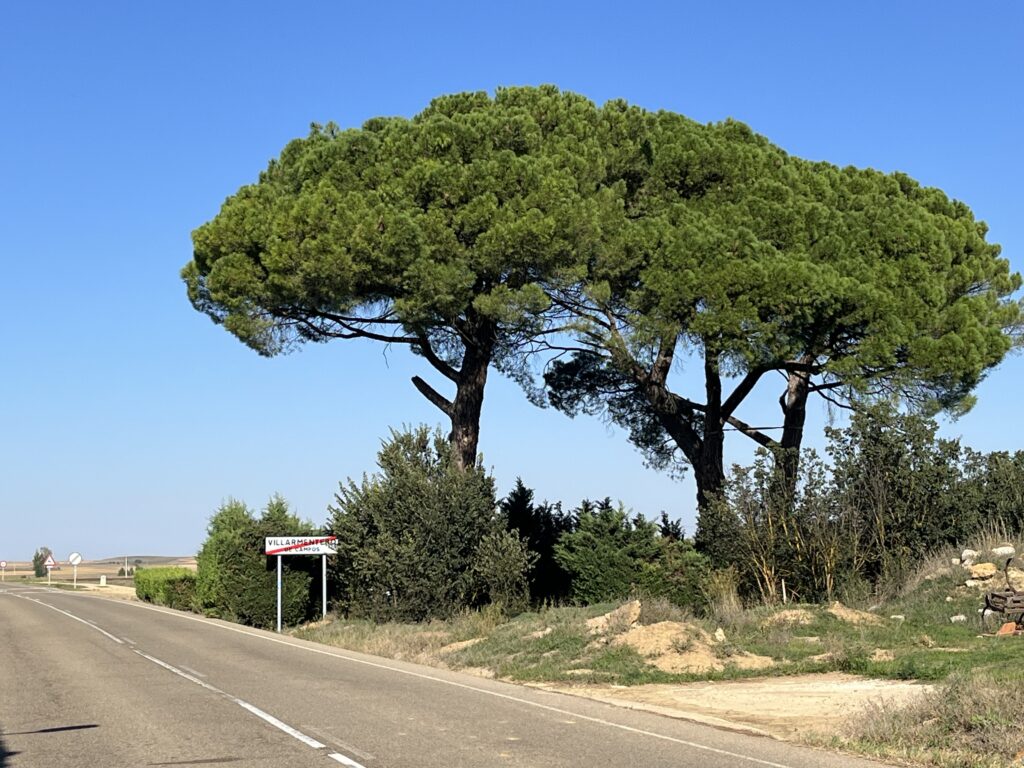
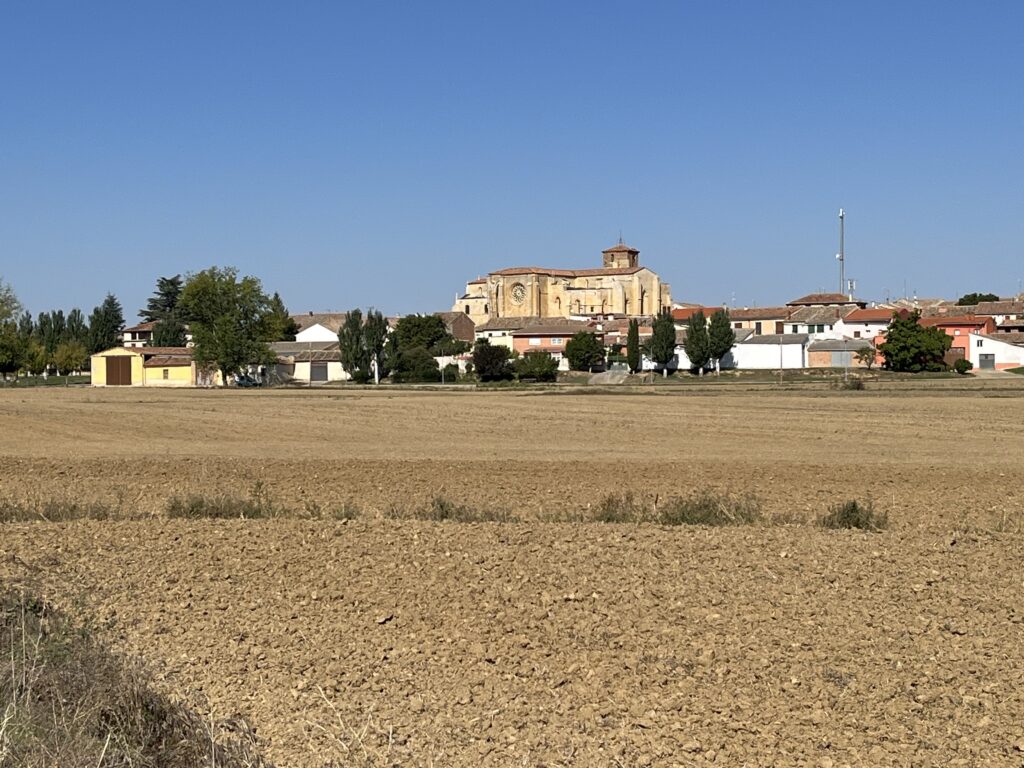
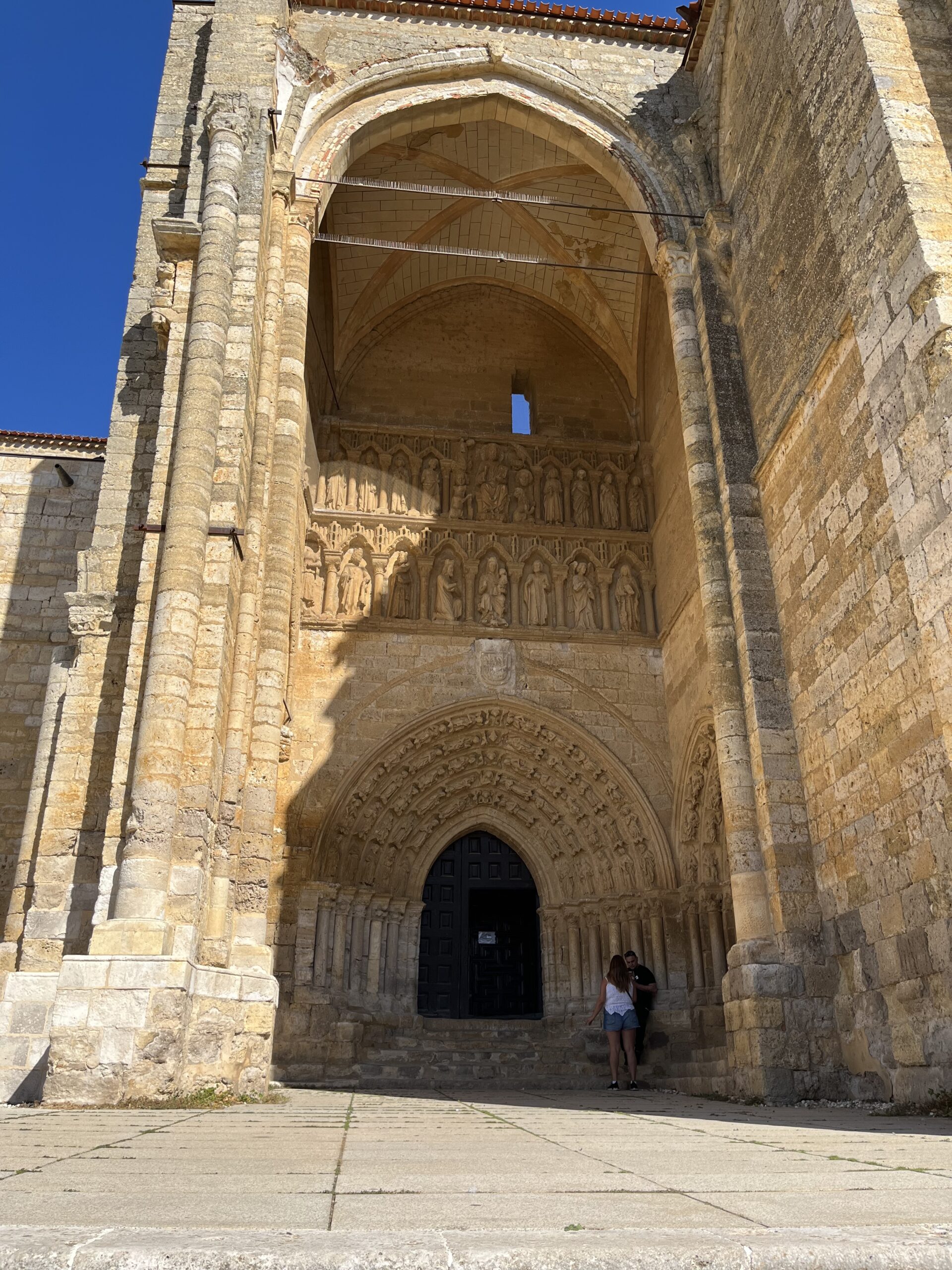
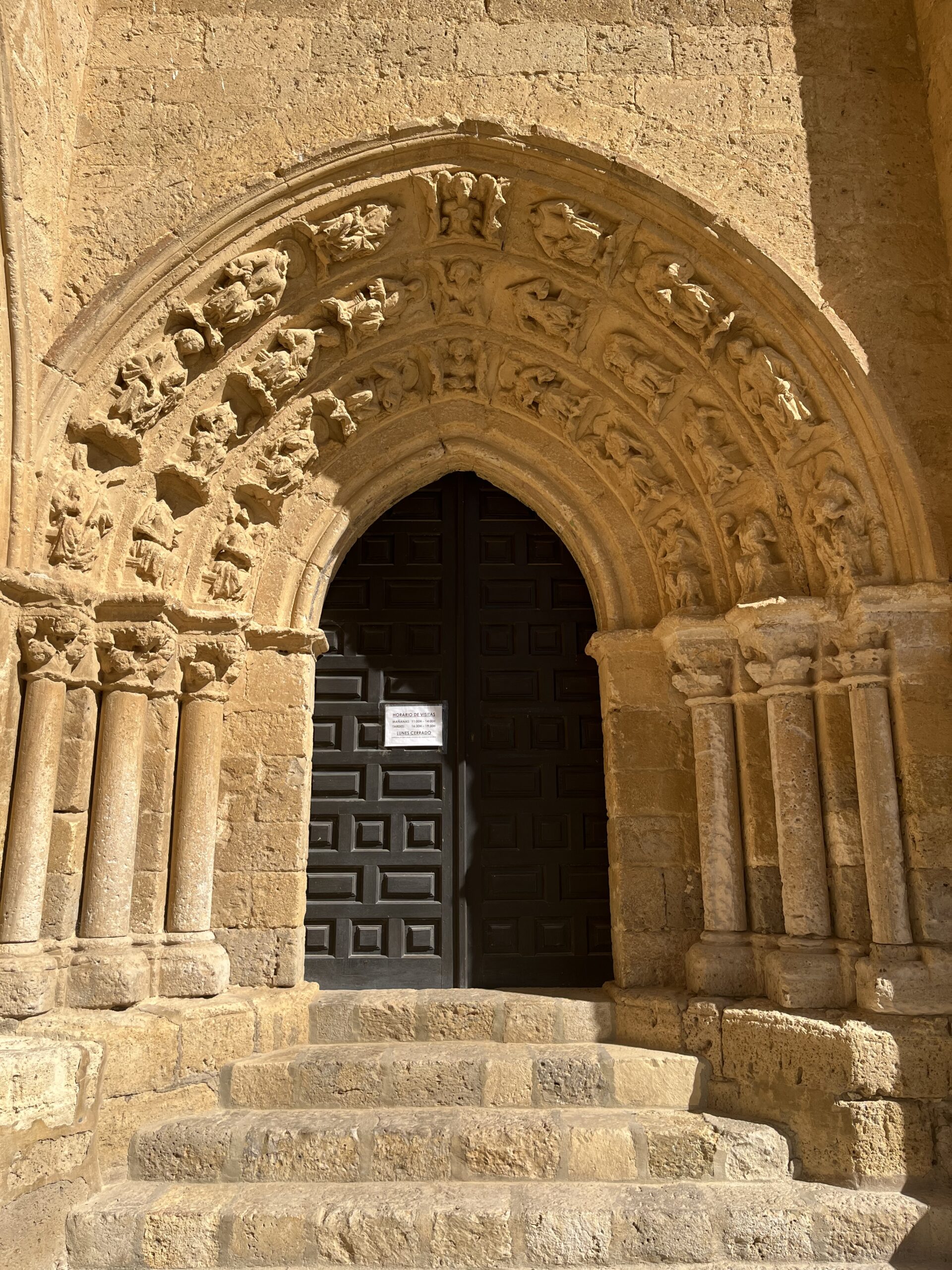
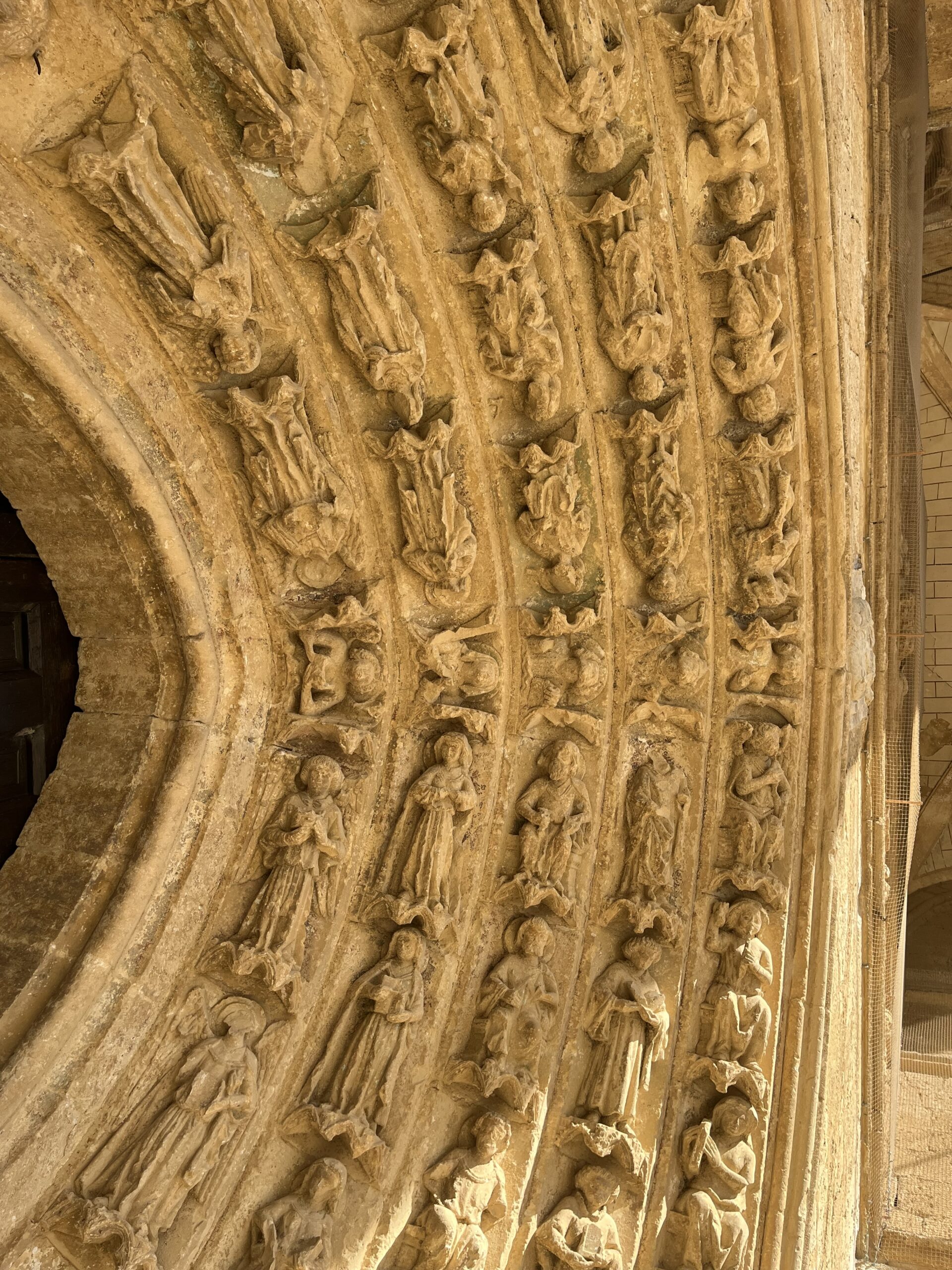
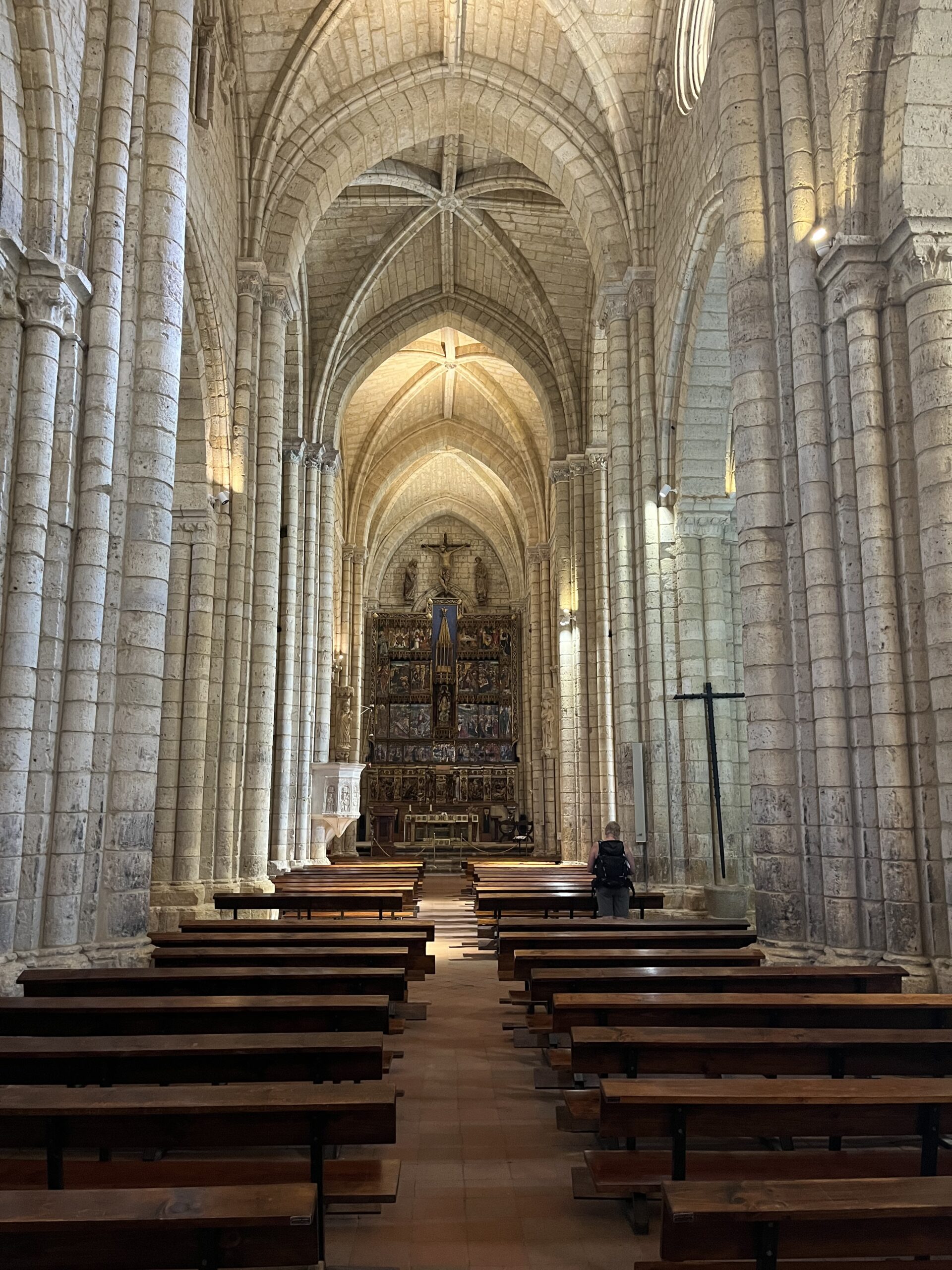
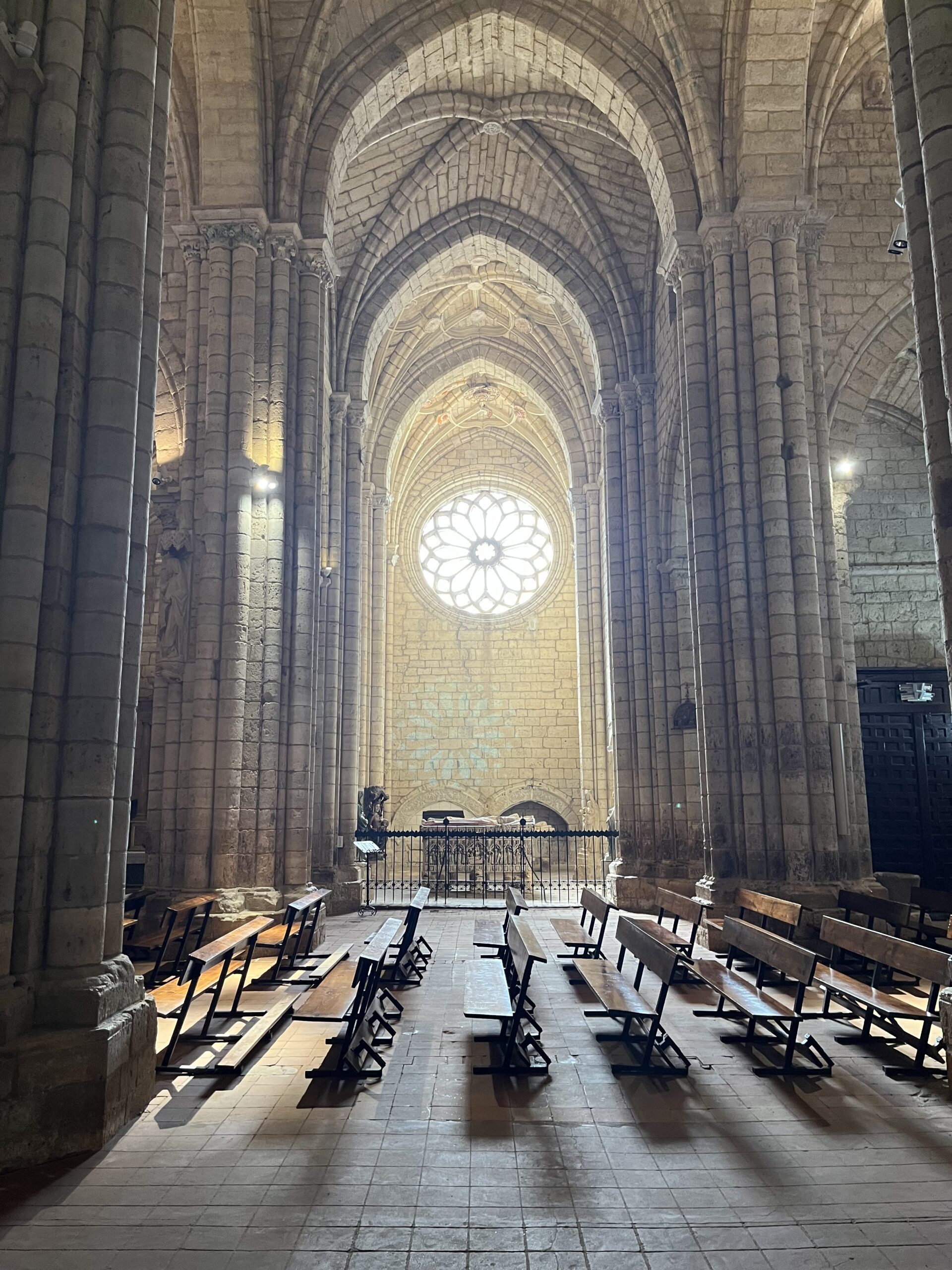
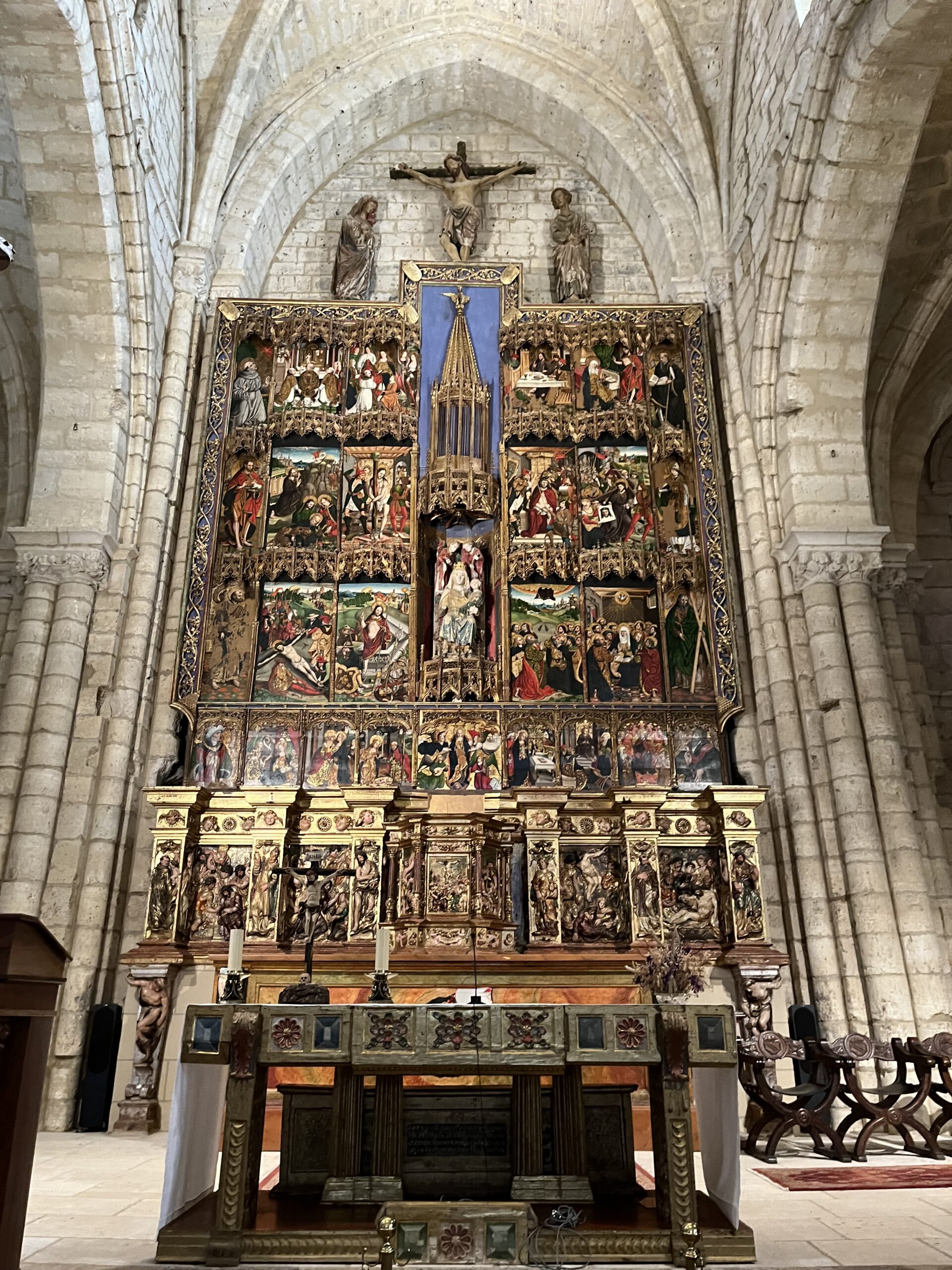
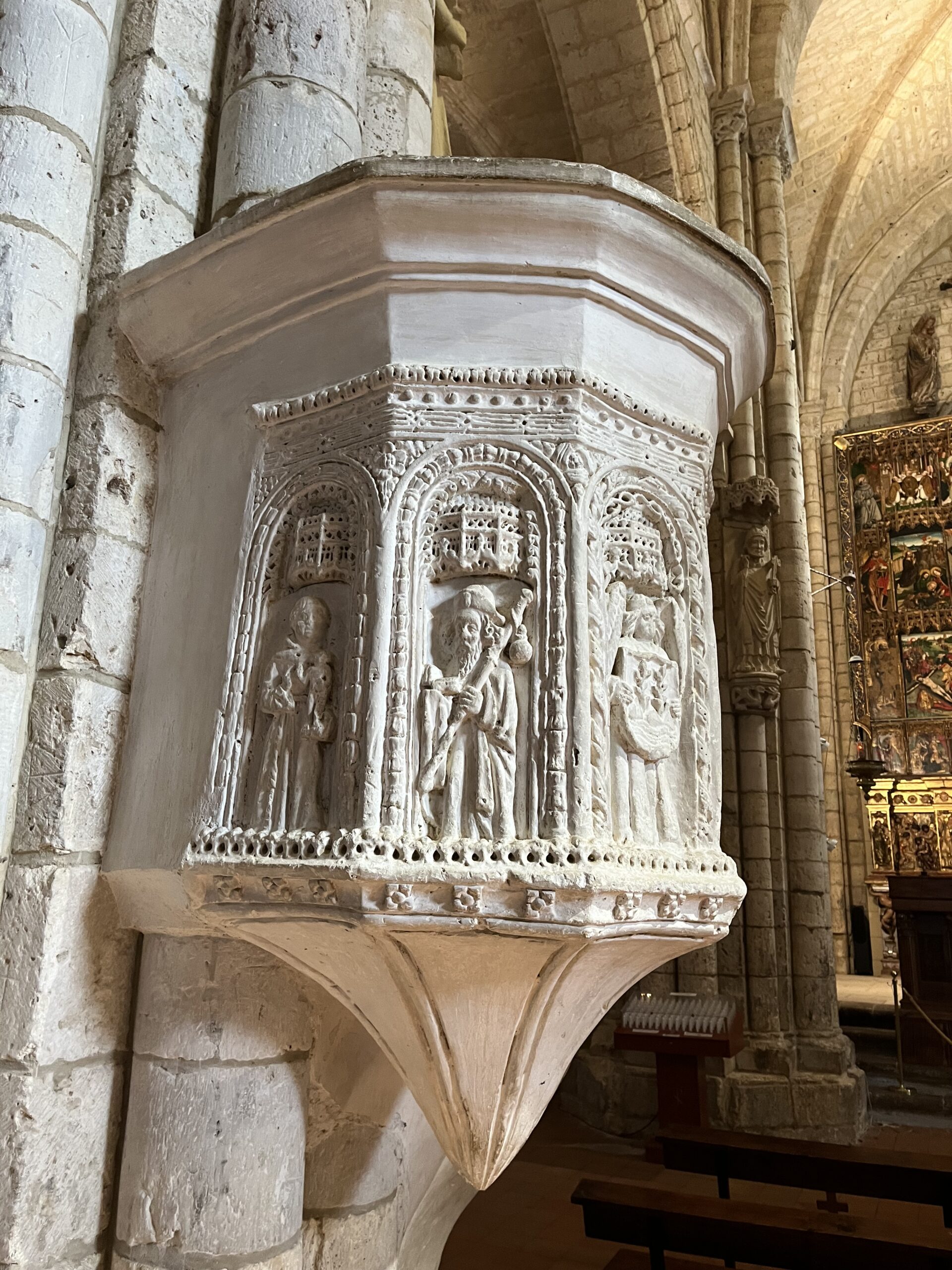
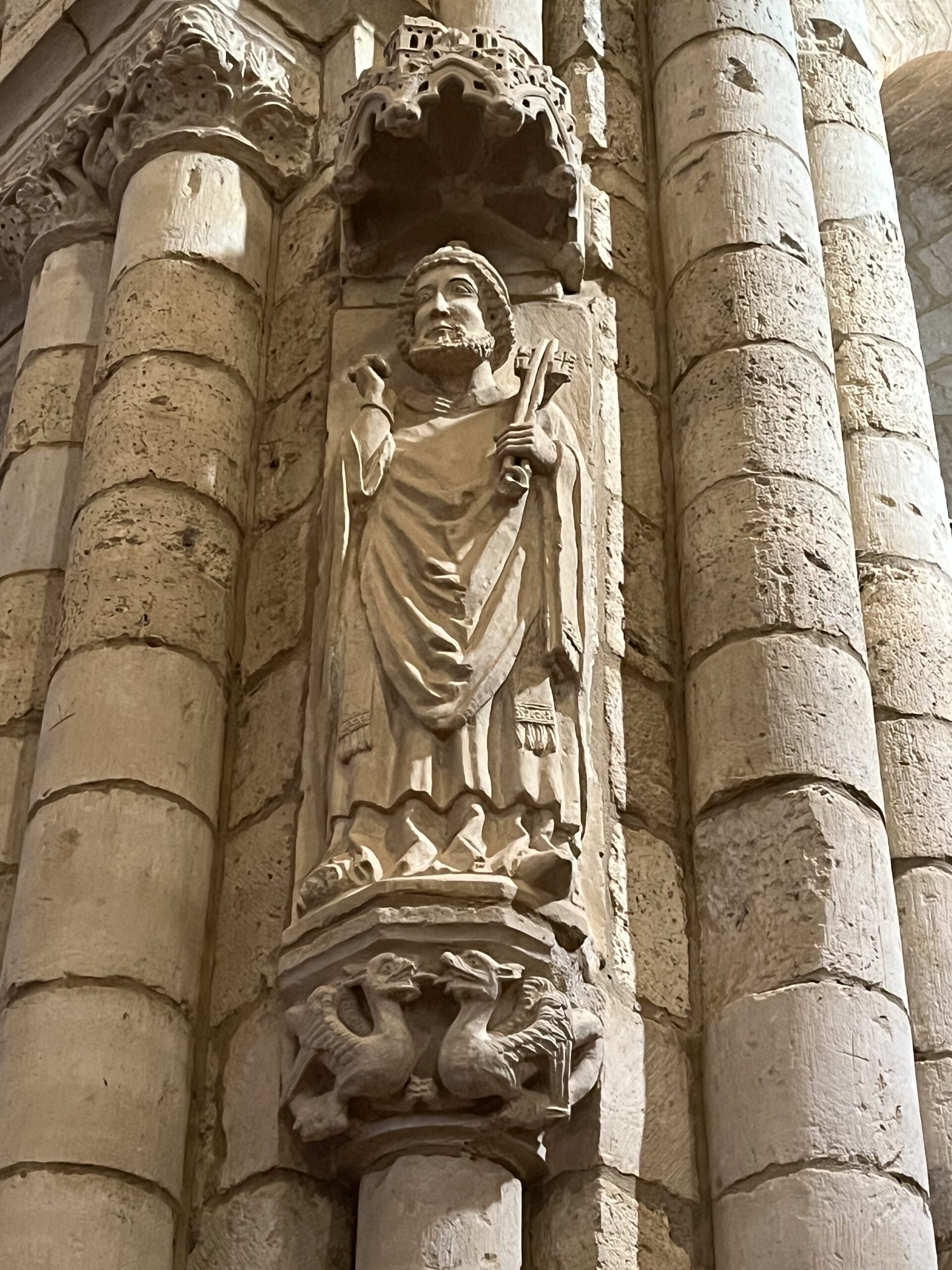
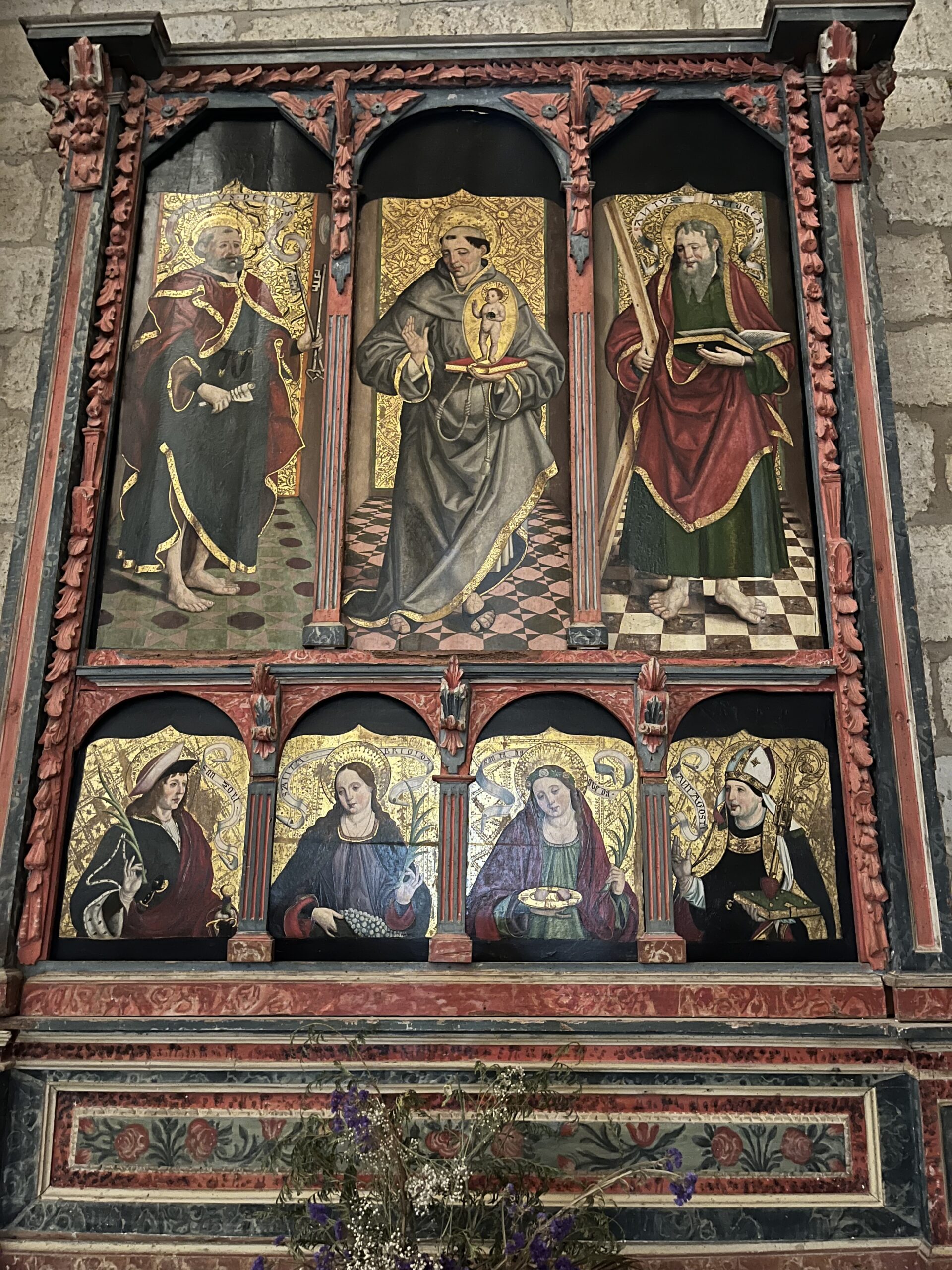
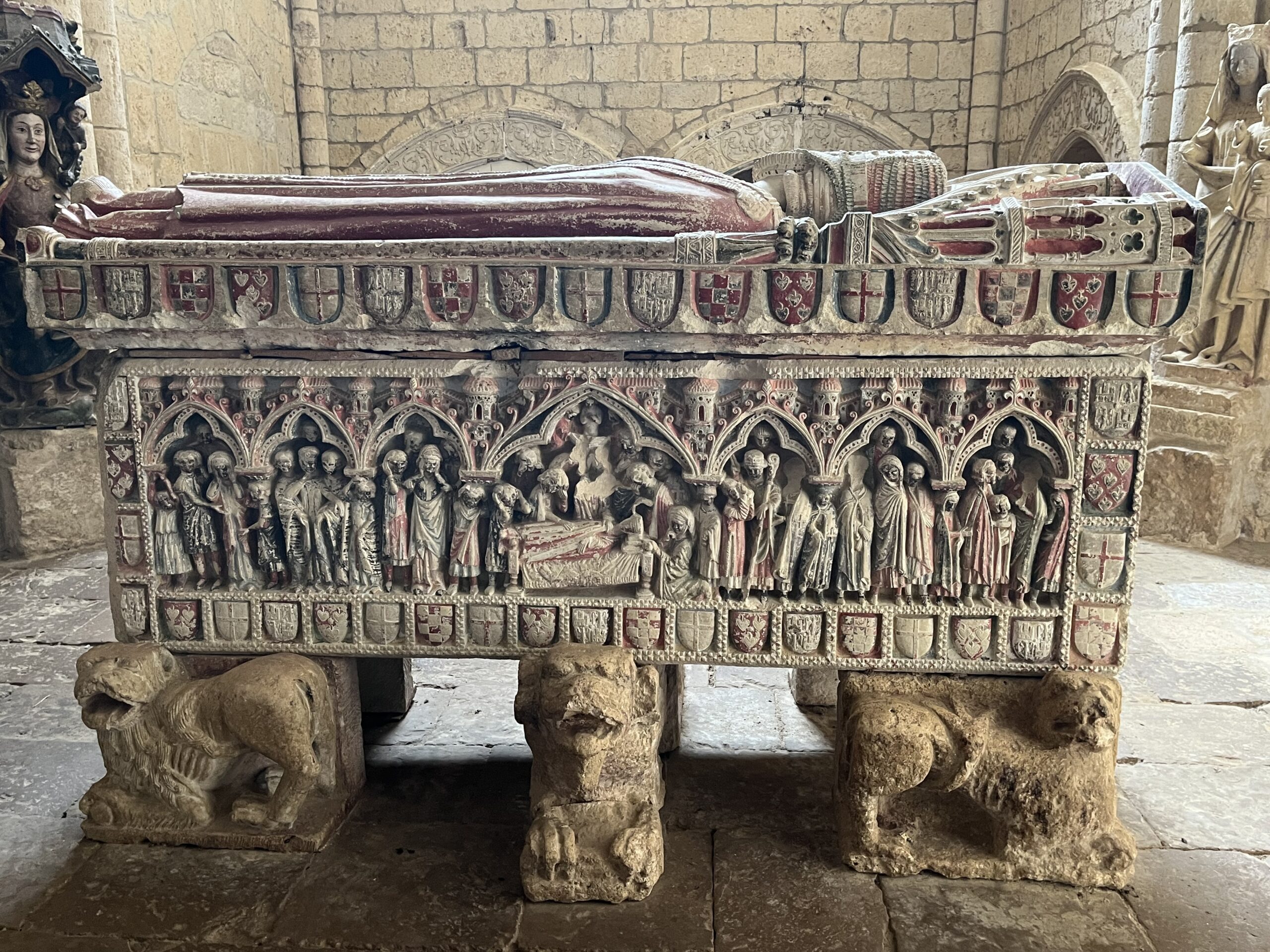
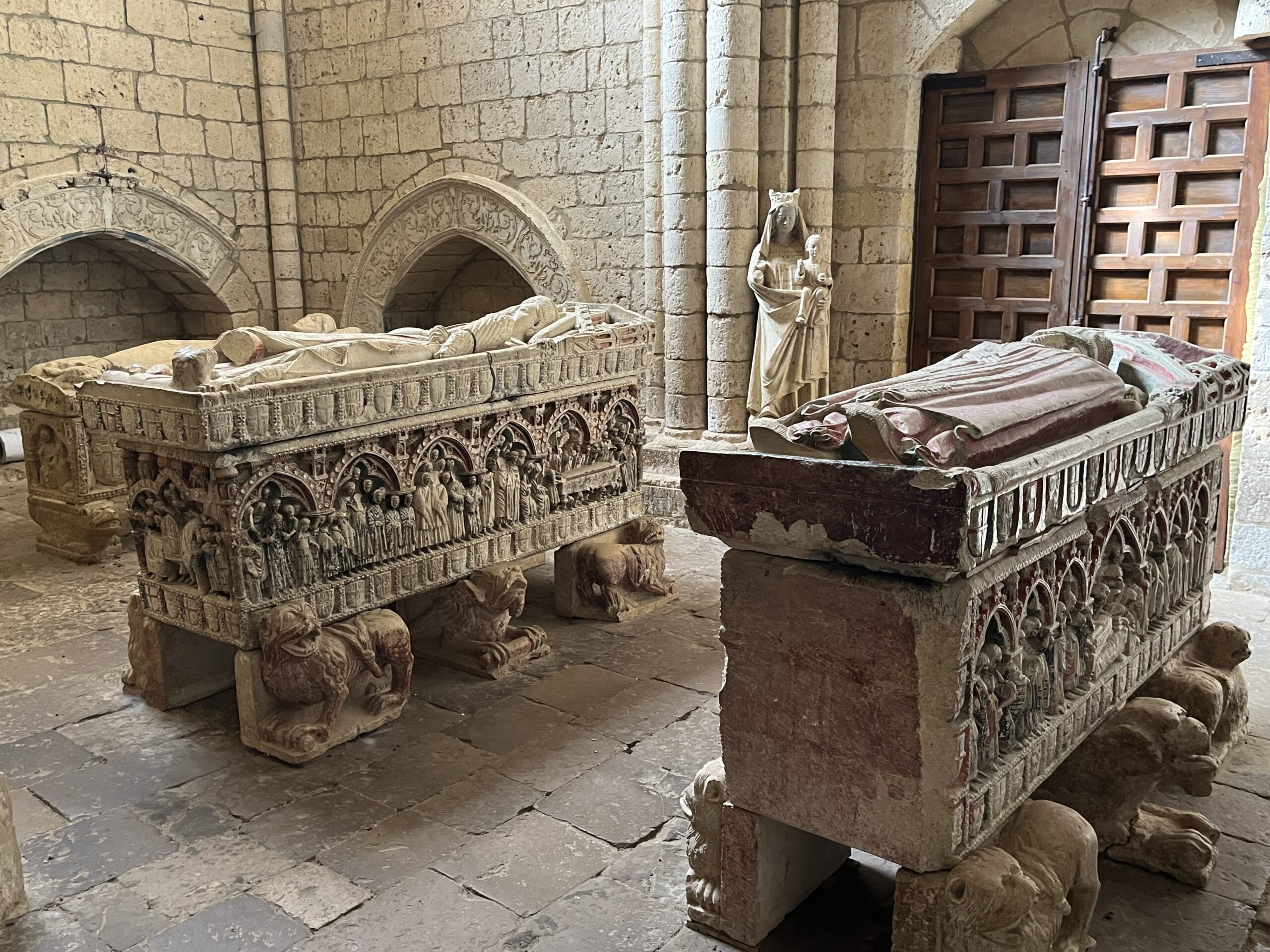
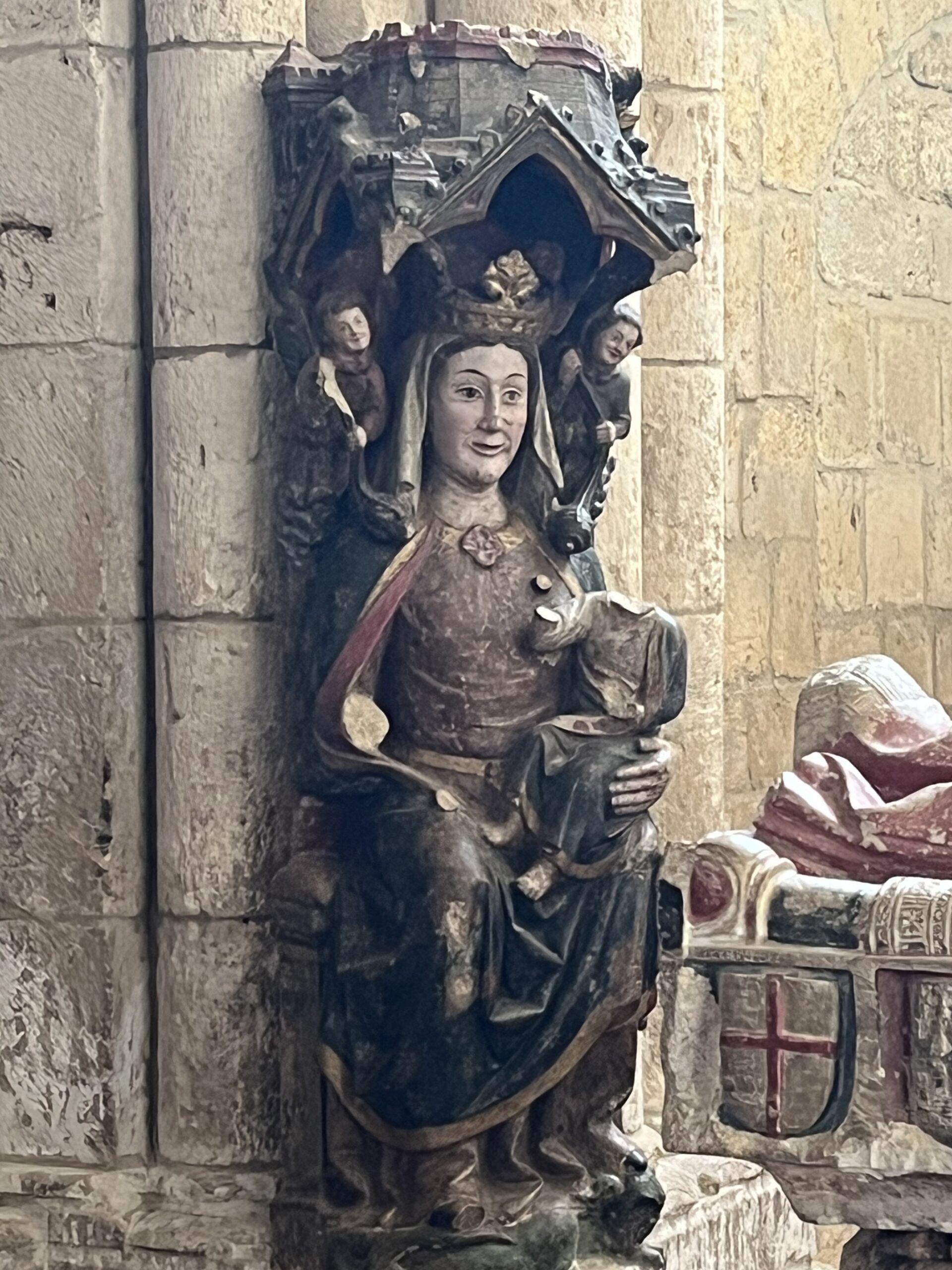
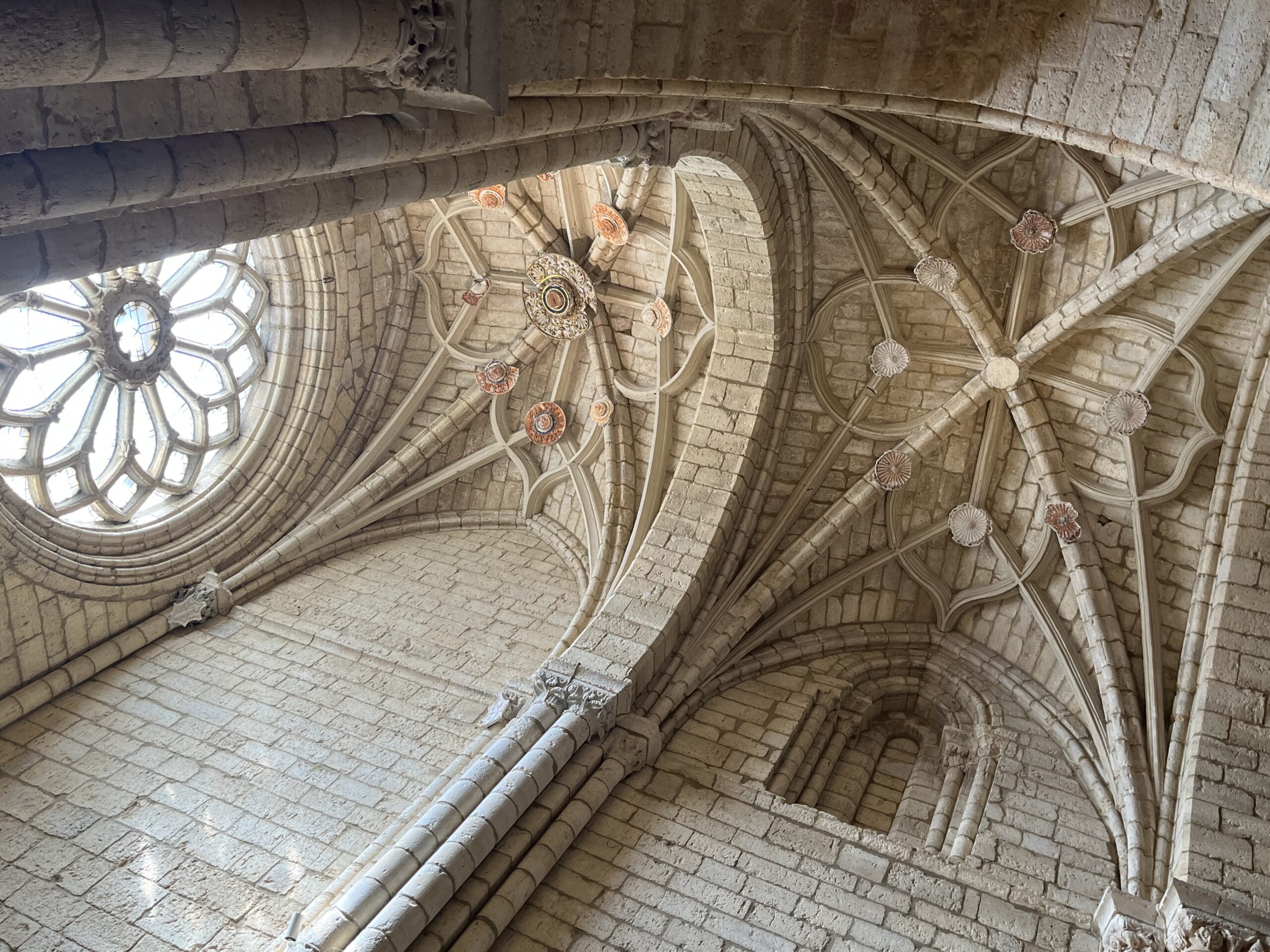
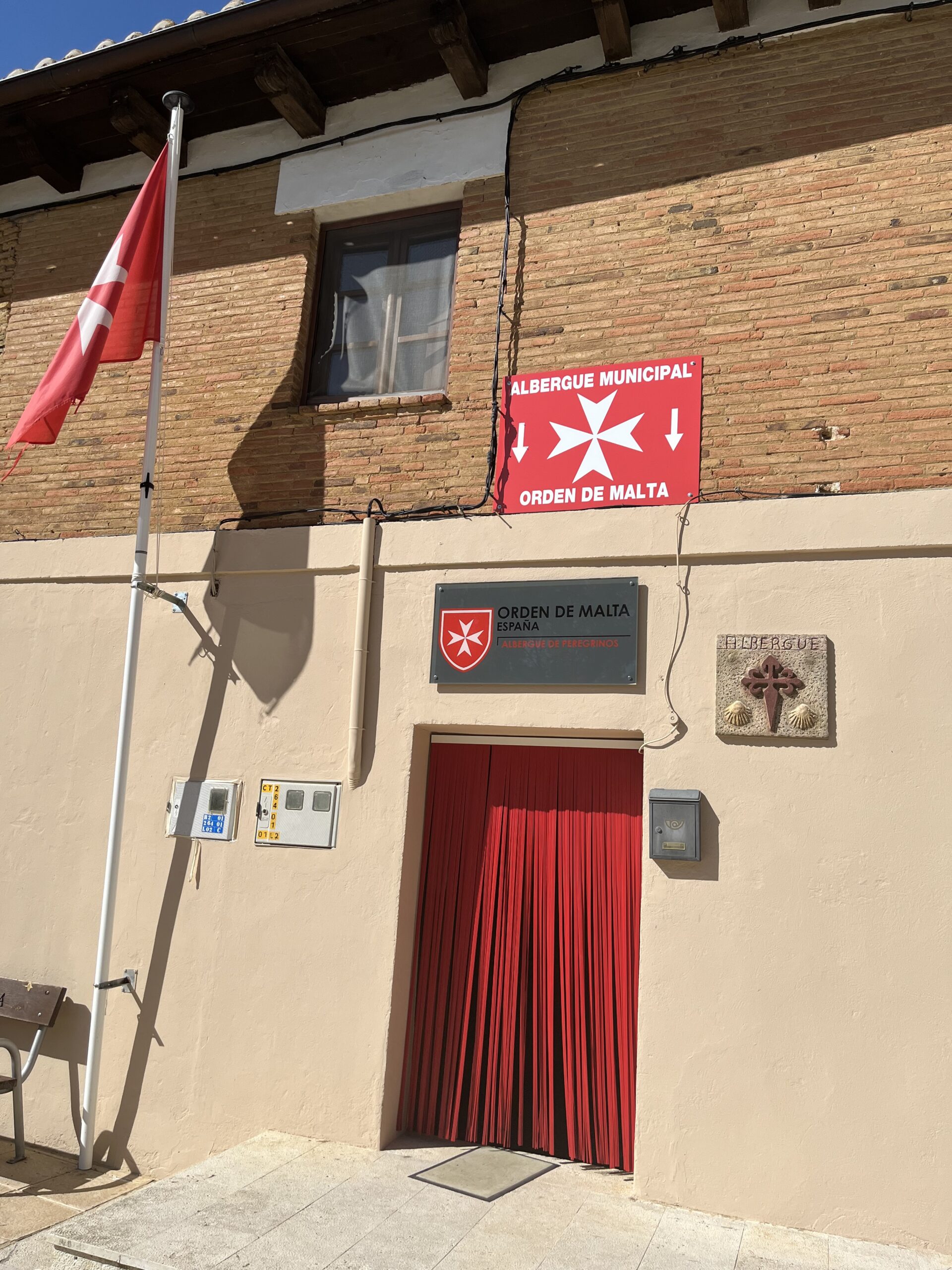
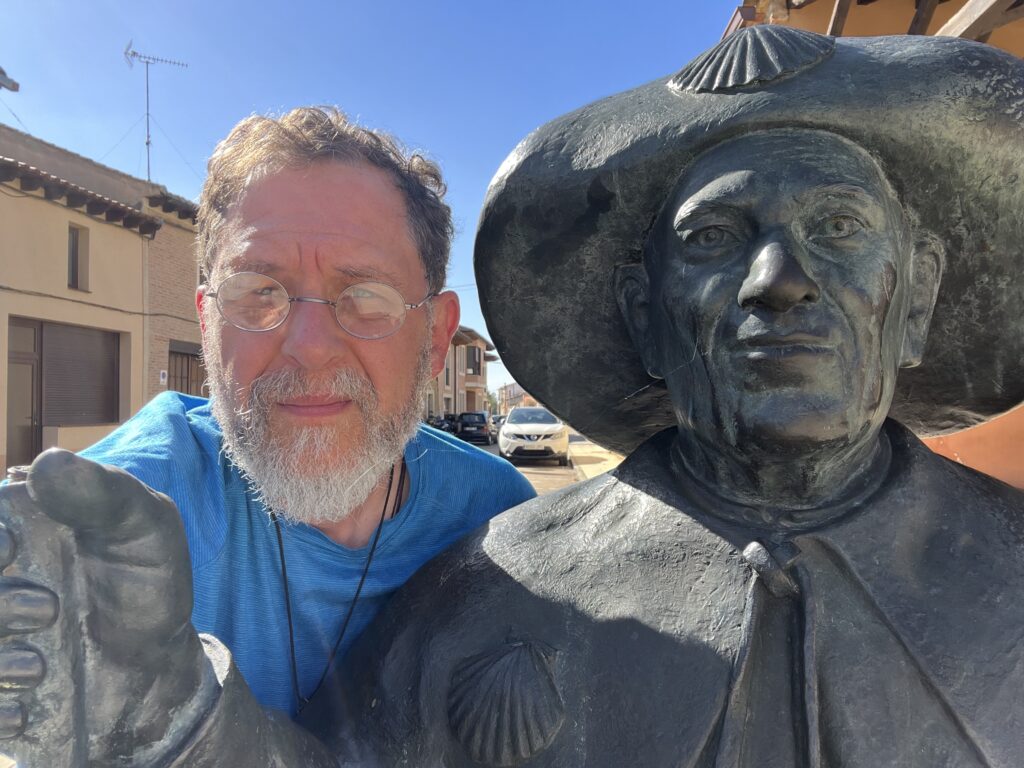

Love you! Stay open to those surprises. The Holy Spirit has you.